Cohort 1 (2017-2019)

Anna Douglas
Bio: Anna received her PhD in 2019 in Interdisciplinary Material Science from Vanderbilt University. As a National Science Foundation Graduate Student Fellow, she primarily focused her studies on…

Anna Douglas
SkyNano, Co-Founder & CEO
Bio:
Anna received her PhD in 2019 in Interdisciplinary Material Science from Vanderbilt University. As a National Science Foundation Graduate Student Fellow, she primarily focused her studies on clean energy technologies and the growth of high quality carbon nanotubes from ambient carbon dioxide. Prior to Vanderbilt, Anna completed a BS in mathematics and chemistry at Lee University. She interned as an undergraduate at the NASA Glenn Research Center, where she discovered her passion for nanotechnology. Anna is a graduate of the first cohort of Innovation Crossroads at Oak Ridge National Laboratory, and was named a 2019 Forbes Magazine “30 Under 30” disrupter in Energy.
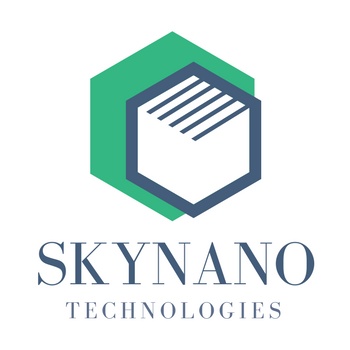
Project Abstract:
Carbon nanotubes have long been touted as the super material that would change the world, with applications ranging from energy, electronics, automotive, aerospace, and medical. However, they have thus far achieved limited commercial success due to their high price, which is a result of the energy intensive limited-scale manufacturing methods currently deployed, which often have environmentally harmful by-products. SkyNano has developed an electrochemical manufacturing technology to produce carbon nanotubes in a scalable ambient pressure system, and uses only inputs of CO2 and electricity, resulting in low operating expenses and no toxic by-products. This technology will enable new products and applications due to the low-cost and scalable nature of the technology. Further, SkyNano’s technology represents a significant feat in the economical viability of CO2 utilization, with the introduction of a high-value product produced from CO2 inputs. Since graduating the Innovation Crossroads program, SkyNano’s technology has been supported by the National Science Foundation (NSF), Department of Energy’s (DOE) Vehicle Technologies Office and Office of Fossil Energy, and a few initial customers.
Bio:
Anna received her PhD in 2019 in Interdisciplinary Material Science from Vanderbilt University. As a National Science Foundation Graduate Student Fellow, she primarily focused her studies on clean energy technologies and the growth of high quality carbon nanotubes from ambient carbon dioxide. Prior to Vanderbilt, Anna completed a BS in mathematics and chemistry at Lee University. She interned as an undergraduate at the NASA Glenn Research Center, where she discovered her passion for nanotechnology. Anna is a graduate of the first cohort of Innovation Crossroads at Oak Ridge National Laboratory, and was named a 2019 Forbes Magazine “30 Under 30” disrupter in Energy.

Project Abstract:
Carbon nanotubes have long been touted as the super material that would change the world, with applications ranging from energy, electronics, automotive, aerospace, and medical. However, they have thus far achieved limited commercial success due to their high price, which is a result of the energy intensive limited-scale manufacturing methods currently deployed, which often have environmentally harmful by-products. SkyNano has developed an electrochemical manufacturing technology to produce carbon nanotubes in a scalable ambient pressure system, and uses only inputs of CO2 and electricity, resulting in low operating expenses and no toxic by-products. This technology will enable new products and applications due to the low-cost and scalable nature of the technology. Further, SkyNano’s technology represents a significant feat in the economical viability of CO2 utilization, with the introduction of a high-value product produced from CO2 inputs. Since graduating the Innovation Crossroads program, SkyNano’s technology has been supported by the National Science Foundation (NSF), Department of Energy’s (DOE) Vehicle Technologies Office and Office of Fossil Energy, and a few initial customers.
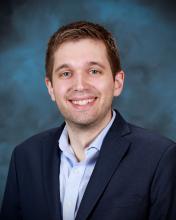
Matthew Ellis
Bio: Matthew received his PhD in Nuclear Engineering from Massachusetts Institute of Technology and hold a MS and BS in Mechanical and Nuclear Engineering from Pennsylvania State University. His…

Matthew Ellis
Yellowstone Energy
Bio:
Matthew received his PhD in Nuclear Engineering from Massachusetts Institute of Technology and hold a MS and BS in Mechanical and Nuclear Engineering from Pennsylvania State University. His research focused on developing and optimizing numerical methods for coupling Monte Carlo codes with finite element applications for multiphysics nuclear reactor simulations. He co-founded Yellowstone Energy in 2016 with Samuel Shaner. Yellowstone Energy focused on the development of a modular, safe, and economic advanced nuclear reactor. After much success, the team ultimately decided to wind-down the company in 2019. Matt is a graduate of the first cohort of Innovation Crossroads at Oak Ridge National Laboratory and currently serves as a Software Engineer at Cray Inc.

Project Abstract:
Yellowstone Energy’s mission was to develop an advanced modular nuclear reactor with integrated thermal energy storage that could maximize the use of existing supply chains to enable near-term deployment of a cost-effective, economic, and passively safe clean energy source. The Yellowstone Energy Molten Nitrate Salt Reactor power plant was unique among advanced reactor designs in using a molten nitrate salt coolant, the only high temperature, ambient pressure coolant commercially deployed in MW-scale thermal power systems. The team was awarded and managed three federal grants totaling $3M+, including $2.6M ARPA-E award.
Bio:
Matthew received his PhD in Nuclear Engineering from Massachusetts Institute of Technology and hold a MS and BS in Mechanical and Nuclear Engineering from Pennsylvania State University. His research focused on developing and optimizing numerical methods for coupling Monte Carlo codes with finite element applications for multiphysics nuclear reactor simulations. He co-founded Yellowstone Energy in 2016 with Samuel Shaner. Yellowstone Energy focused on the development of a modular, safe, and economic advanced nuclear reactor. After much success, the team ultimately decided to wind-down the company in 2019. Matt is a graduate of the first cohort of Innovation Crossroads at Oak Ridge National Laboratory and currently serves as a Software Engineer at Cray Inc.

Project Abstract:
Yellowstone Energy’s mission was to develop an advanced modular nuclear reactor with integrated thermal energy storage that could maximize the use of existing supply chains to enable near-term deployment of a cost-effective, economic, and passively safe clean energy source. The Yellowstone Energy Molten Nitrate Salt Reactor power plant was unique among advanced reactor designs in using a molten nitrate salt coolant, the only high temperature, ambient pressure coolant commercially deployed in MW-scale thermal power systems. The team was awarded and managed three federal grants totaling $3M+, including $2.6M ARPA-E award.
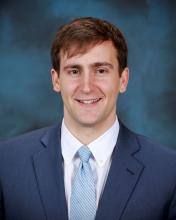
Mitchell Ishmael
Bio: Mitchell received his PhD in Materials Science and Engineering from Cornell University and holds a BS in Chemical Engineering with a Minor in Economics from Rose-Hulman Institute of Technology…

Mitchell Ishmael
Shift Thermal, Co-Founder & CTO
Bio:
Mitchell received his PhD in Materials Science and Engineering from Cornell University and holds a BS in Chemical Engineering with a Minor in Economics from Rose-Hulman Institute of Technology. He has experience designing, building, and effectively using experimental systems for high-precision measurements of material properties. He has synthesized phase change materials and surface chemistries for efficient and cost-effective thermal energy storage. Mitch serves as co-founder and CTO of Shift Thermal and is graduate of the first cohort of Innovation Crossroads at Oak Ridge National Laboratory.

Project Abstract:
Shift Thermal is commercializing advanced ice thermal energy storage for HVAC, shifting our cooling to be more sustainable, cost-effective, and resilient. Shift Thermal was founded in 2017 by two engineering PhDs from Cornell University to help solve for the missing link in our sustainable energy future: energy storage. The company moved to Tennessee to join the inaugural cohort of Innovation Crossroads, a DOE-funded entrepreneurship program at Oak Ridge National Laboratory.
The Shift Thermal IHEX module is perfectly suited for both air conditioning and process cooling applications, capable of storage temperatures from 0 to -15°C (32 to 5°F). Be freezing water without it sticking to the cold surface, IHEX technology leads to a highly efficient cooling coil that generates ice slurry. The IHEX Module solves the problem of other ice thermal energy storage systems by eliminating the insulative ice layer and passively shedding slurry from the surface.
Bio:
Mitchell received his PhD in Materials Science and Engineering from Cornell University and holds a BS in Chemical Engineering with a Minor in Economics from Rose-Hulman Institute of Technology. He has experience designing, building, and effectively using experimental systems for high-precision measurements of material properties. He has synthesized phase change materials and surface chemistries for efficient and cost-effective thermal energy storage. Mitch serves as co-founder and CTO of Shift Thermal and is graduate of the first cohort of Innovation Crossroads at Oak Ridge National Laboratory.

Project Abstract:
Shift Thermal is commercializing advanced ice thermal energy storage for HVAC, shifting our cooling to be more sustainable, cost-effective, and resilient. Shift Thermal was founded in 2017 by two engineering PhDs from Cornell University to help solve for the missing link in our sustainable energy future: energy storage. The company moved to Tennessee to join the inaugural cohort of Innovation Crossroads, a DOE-funded entrepreneurship program at Oak Ridge National Laboratory.
The Shift Thermal IHEX module is perfectly suited for both air conditioning and process cooling applications, capable of storage temperatures from 0 to -15°C (32 to 5°F). Be freezing water without it sticking to the cold surface, IHEX technology leads to a highly efficient cooling coil that generates ice slurry. The IHEX Module solves the problem of other ice thermal energy storage systems by eliminating the insulative ice layer and passively shedding slurry from the surface.
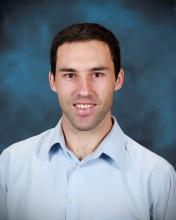
Samuel Shaner
Bio: Samuel received his PhD and MS in Nuclear Science and Engineering from Massachusetts Institute of Technology and hold a BS in Chemical Engineering from the University of California, Santa…

Samuel Shaner
Yellowstone Energy
Bio:
Samuel received his PhD and MS in Nuclear Science and Engineering from Massachusetts Institute of Technology and hold a BS in Chemical Engineering from the University of California, Santa Barbara. His research focused on building high performance computing packages for nuclear reactor analysis. He co-founded Yellowstone Energy in 2016 with Matthew Ellis. Yellowstone Energy focused on the development of a modular, safe, and economic advanced nuclear reactor. After much success, the team ultimately decided to wind-down the company in 2019. Sam is a graduate of the first cohort of Innovation Crossroads at Oak Ridge National Laboratory and currently serves as the Director of Engineering at C-Zero.

Project Abstract:
Yellowstone Energy’s mission was to develop an advanced modular nuclear reactor with integrated thermal energy storage that could maximize the use of existing supply chains to enable near-term deployment of a cost-effective, economic, and passively safe clean energy source. The Yellowstone Energy Molten Nitrate Salt Reactor power plant was unique among advanced reactor designs in using a molten nitrate salt coolant, the only high temperature, ambient pressure coolant commercially deployed in MW-scale thermal power systems. The team was awarded and managed three federal grants totaling $3M+, including $2.6M ARPA-E award.
Bio:
Samuel received his PhD and MS in Nuclear Science and Engineering from Massachusetts Institute of Technology and hold a BS in Chemical Engineering from the University of California, Santa Barbara. His research focused on building high performance computing packages for nuclear reactor analysis. He co-founded Yellowstone Energy in 2016 with Matthew Ellis. Yellowstone Energy focused on the development of a modular, safe, and economic advanced nuclear reactor. After much success, the team ultimately decided to wind-down the company in 2019. Sam is a graduate of the first cohort of Innovation Crossroads at Oak Ridge National Laboratory and currently serves as the Director of Engineering at C-Zero.

Project Abstract:
Yellowstone Energy’s mission was to develop an advanced modular nuclear reactor with integrated thermal energy storage that could maximize the use of existing supply chains to enable near-term deployment of a cost-effective, economic, and passively safe clean energy source. The Yellowstone Energy Molten Nitrate Salt Reactor power plant was unique among advanced reactor designs in using a molten nitrate salt coolant, the only high temperature, ambient pressure coolant commercially deployed in MW-scale thermal power systems. The team was awarded and managed three federal grants totaling $3M+, including $2.6M ARPA-E award.
Cohort 2 (2018-2020)
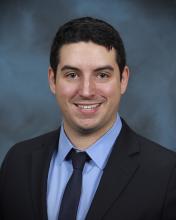
Don DeRosa
Bio: Don DeRosa is developing a next generation electrolyte that will significantly lower the cost and size of ultracapacitor modules. The resulting lower cost and smaller ultracapacitor…

Don DeRosa
Eonix, Founder & CEO
Bio:
Don DeRosa is developing a next generation electrolyte that will significantly lower the cost and size of ultracapacitor modules. The resulting lower cost and smaller ultracapacitor modules can be used in tandem with lithium-ion batteries to dramatically improve the efficiency, range, and longevity of hybrid and electric vehicles. He received his PhD in Nanoscience from the State University of New York at Albany and is a graduate of the second cohort of Innovation Crossroads at Oak Ridge National Laboratory.

Project Abstract:
Eonix was originally spun out of the College of Nanoscale Science and Engineering (CNSE) to explore the commercialization of 21 novel ionic liquid electrolytes for ultracapacitors developed through a series of New York State Energy Research and Development Authority (NYSERDA) grants. After receiving a National Science Foundation (NSF) i-Corps award to explore the market potential of these electrolytes, we discovered that ultracapacitor device manufacturers were hampered far more by cost rather than device performance, contrary to the claims in academia. These concerns regarding ultracapacitor device cost were echoed in the interviews we later conducted with representatives at automotive OEMs. Despite the automotive performance advantages offered by ultracapacitors and demonstrated in the Chinese hybrid bus and European start stop markets, ultracapacitors would not be adopted for hybrid and electric vehicles by domestic automotive companies without a significant reduction in cost and size. At the conclusion of i-Corps, Eonix was awarded a $250k NYSERDA grant to further study different electrolyte solutions on the benchtop and prototype scale. By leveraging the diverse characterization resources available at the CNSE, Eonix observed the impact of different electrolyte compositions on the degradation of these devices when exposed to a larger potential window. A novel salt that reduced device resistance by 40% was developed during this project. Eonix now aims to leverage this highly conductive salt to develop an electrolyte that expands the potential window of ultracapacitor devices from 2.7V to 3.5V.
Bio:
Don DeRosa is developing a next generation electrolyte that will significantly lower the cost and size of ultracapacitor modules. The resulting lower cost and smaller ultracapacitor modules can be used in tandem with lithium-ion batteries to dramatically improve the efficiency, range, and longevity of hybrid and electric vehicles. He received his PhD in Nanoscience from the State University of New York at Albany and is a graduate of the second cohort of Innovation Crossroads at Oak Ridge National Laboratory.

Project Abstract:
Eonix was originally spun out of the College of Nanoscale Science and Engineering (CNSE) to explore the commercialization of 21 novel ionic liquid electrolytes for ultracapacitors developed through a series of New York State Energy Research and Development Authority (NYSERDA) grants. After receiving a National Science Foundation (NSF) i-Corps award to explore the market potential of these electrolytes, we discovered that ultracapacitor device manufacturers were hampered far more by cost rather than device performance, contrary to the claims in academia. These concerns regarding ultracapacitor device cost were echoed in the interviews we later conducted with representatives at automotive OEMs. Despite the automotive performance advantages offered by ultracapacitors and demonstrated in the Chinese hybrid bus and European start stop markets, ultracapacitors would not be adopted for hybrid and electric vehicles by domestic automotive companies without a significant reduction in cost and size. At the conclusion of i-Corps, Eonix was awarded a $250k NYSERDA grant to further study different electrolyte solutions on the benchtop and prototype scale. By leveraging the diverse characterization resources available at the CNSE, Eonix observed the impact of different electrolyte compositions on the degradation of these devices when exposed to a larger potential window. A novel salt that reduced device resistance by 40% was developed during this project. Eonix now aims to leverage this highly conductive salt to develop an electrolyte that expands the potential window of ultracapacitor devices from 2.7V to 3.5V.
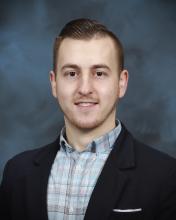
Shane McMahon
Bio: Shane McMahon is developing thin-film semiconductor substrates that will serve as a novel platform for highly integrated and flexible electronic devices. The platform will provide the…

Shane McMahon
Lux Semiconductors, Co-Founder & CEO
Bio:
Shane McMahon is developing thin-film semiconductor substrates that will serve as a novel platform for highly integrated and flexible electronic devices. The platform will provide the ability to integrate core Internet of Things (IoT) functionality, including sensors, logic, memory, communication, and power. Shane holds a PhD in Nano-Engineering from the State University of New York at Albany and is a graduate of the second cohort of Innovation Crossroads at Oak Ridge National Laboratory.

Project Abstract:
Lux Semiconductors can significantly improve the performance of large area, thin-film semiconductors through a patent pending recrystallization process. By leveraging a century of innovations in bulk crystal growth and applying them to low cost thin-films for the first time, Lux will deliver an entirely new class of flexible semiconductors to serve as a next generation material platform for integrated electronics. The platform will be suitable to host a range of electronic components and fully integrated system-on-chip designs including sensors, RF, displays, lighting, processors, memory, micro-electro-mechanical systems (MEMS), energy harvesting, and similar ‘internet of things’ devices. The company was founded in April 2017 by Dr. Shane McMahon, CEO, and Dr. Graeme Housser, CTO. The company is co-located in Oak Ridge, TN and in Albany, NY. Lux is developing and commercializing technology spawned from Ph.D. research conducted on behalf of the founders during their tenure at the SUNY Polytechnic Institute. Lux has raised significant non-dilutive funding including, National Science Foundation SBIR Phase I and Phase II awards, a Department of Defense Air Force Research Laboratory SBIR Phase I and II awards. Lux has also received funding from NEXUS-NY, RIT Venture Creations, and the Techstars Starburst Space Accelerator.
Bio:
Shane McMahon is developing thin-film semiconductor substrates that will serve as a novel platform for highly integrated and flexible electronic devices. The platform will provide the ability to integrate core Internet of Things (IoT) functionality, including sensors, logic, memory, communication, and power. Shane holds a PhD in Nano-Engineering from the State University of New York at Albany and is a graduate of the second cohort of Innovation Crossroads at Oak Ridge National Laboratory.
Project Abstract:
Lux Semiconductors can significantly improve the performance of large area, thin-film semiconductors through a patent pending recrystallization process. By leveraging a century of innovations in bulk crystal growth and applying them to low cost thin-films for the first time, Lux will deliver an entirely new class of flexible semiconductors to serve as a next generation material platform for integrated electronics. The platform will be suitable to host a range of electronic components and fully integrated system-on-chip designs including sensors, RF, displays, lighting, processors, memory, micro-electro-mechanical systems (MEMS), energy harvesting, and similar ‘internet of things’ devices. The company was founded in April 2017 by Dr. Shane McMahon, CEO, and Dr. Graeme Housser, CTO. The company is co-located in Oak Ridge, TN and in Albany, NY. Lux is developing and commercializing technology spawned from Ph.D. research conducted on behalf of the founders during their tenure at the SUNY Polytechnic Institute. Lux has raised significant non-dilutive funding including, National Science Foundation SBIR Phase I and Phase II awards, a Department of Defense Air Force Research Laboratory SBIR Phase I and II awards. Lux has also received funding from NEXUS-NY, RIT Venture Creations, and the Techstars Starburst Space Accelerator.
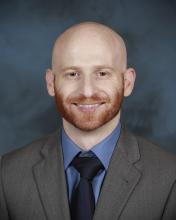
Justin Nussbaum
Bio: Ascend Manufacturing is focused on developing a manufacturing grade additive manufacturing system, utilizing a technology he developed, called Large Area Projection Sintering (LAPS). LAPS…

Justin Nussbaum
Ascend Manufacturing, Founder & CEO
Bio:
Ascend Manufacturing is focused on developing a manufacturing grade additive manufacturing system, utilizing a technology he developed, called Large Area Projection Sintering (LAPS). LAPS offers many advantages over new and traditional additive manufacturing technologies. With LAPS, components can be economically created with drastically increased production rates, process a broader range of materials, provide superior mechanical properties, all while fully integrating quality control and assurance measures. Justin completed his PhD in Mechanical Engineering at the University of South Florida and is a graduate of the second cohort of Innovation Crossroads at Oak Ridge National Laboratory.

Project Abstract:
The manufacturing industry in the US today is a massive $2.3 trillion dollars. Manufacturing provides the backbone to our nation in which all other industries benefit from and rely on. As our manufacturing capabilities are improved, our nation can provide faster, cheaper and higher quality parts/services while achieving economic competitiveness to keep manufacturing and all of its jobs at home. One such technology which is driving this charge is additive manufacturing (aka 3D printing). Many times, additive manufacturing can decrease prototyping costs and timelines by over 90% over traditional methods. The nation is moving towards the fourth industrial revolution where agile manufacturing provides the ability to create components on-demand when they are needed, eliminating logistical nightmares behind stock piling large quantities of parts for the future and freeing up capital invested in inventory. While current additive manufacturing technologies can address this issue due to their ability to create components without molds, none have the production speed, quality, or economic price point to satisfy this need.
Ascend Manufacturing designs and fabricates novel industrial additive manufacturing equipment, born from industrial need. Their patented (one granted, five pending) technology is the first technology to truly enable the agile manufacturing industry 4.0, perfectly supplementing existing manufacturing technologies. The new technology used in these systems are being perfected by the founder through collaboration with Oak Ridge National Laboratory, the University of South Florida, and Brigham Young University. These systems are capable of producing injection molded quantities of parts overnight (up to 250,000 parts per day from each machine) without any molds, decreasing turnaround times from months to days and removing the tens to hundreds of thousands in startup costs to create that mold. Additionally, the flexible systems can process materials that are 10X cheaper than what competitors use or high-performance polymers for our aerospace and defense customers. Lastly, they are the one and only company that can fully integrate quality control and quality assurance measures where every part is “born certified” without spending any additional time or money to qualify them. The company is currently seeking additional investors to join a growing pool of investors in a $2.5M seed raise.
Bio:
Ascend Manufacturing is focused on developing a manufacturing grade additive manufacturing system, utilizing a technology he developed, called Large Area Projection Sintering (LAPS). LAPS offers many advantages over new and traditional additive manufacturing technologies. With LAPS, components can be economically created with drastically increased production rates, process a broader range of materials, provide superior mechanical properties, all while fully integrating quality control and assurance measures. Justin completed his PhD in Mechanical Engineering at the University of South Florida and is a graduate of the second cohort of Innovation Crossroads at Oak Ridge National Laboratory.

Project Abstract:
The manufacturing industry in the US today is a massive $2.3 trillion dollars. Manufacturing provides the backbone to our nation in which all other industries benefit from and rely on. As our manufacturing capabilities are improved, our nation can provide faster, cheaper and higher quality parts/services while achieving economic competitiveness to keep manufacturing and all of its jobs at home. One such technology which is driving this charge is additive manufacturing (aka 3D printing). Many times, additive manufacturing can decrease prototyping costs and timelines by over 90% over traditional methods. The nation is moving towards the fourth industrial revolution where agile manufacturing provides the ability to create components on-demand when they are needed, eliminating logistical nightmares behind stock piling large quantities of parts for the future and freeing up capital invested in inventory. While current additive manufacturing technologies can address this issue due to their ability to create components without molds, none have the production speed, quality, or economic price point to satisfy this need.
Ascend Manufacturing designs and fabricates novel industrial additive manufacturing equipment, born from industrial need. Their patented (one granted, five pending) technology is the first technology to truly enable the agile manufacturing industry 4.0, perfectly supplementing existing manufacturing technologies. The new technology used in these systems are being perfected by the founder through collaboration with Oak Ridge National Laboratory, the University of South Florida, and Brigham Young University. These systems are capable of producing injection molded quantities of parts overnight (up to 250,000 parts per day from each machine) without any molds, decreasing turnaround times from months to days and removing the tens to hundreds of thousands in startup costs to create that mold. Additionally, the flexible systems can process materials that are 10X cheaper than what competitors use or high-performance polymers for our aerospace and defense customers. Lastly, they are the one and only company that can fully integrate quality control and quality assurance measures where every part is “born certified” without spending any additional time or money to qualify them. The company is currently seeking additional investors to join a growing pool of investors in a $2.5M seed raise.
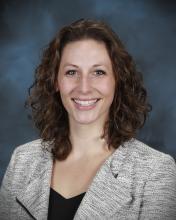
Megan O'Connor
Bio: Megan O’Connor is an environmental engineer and chemist who has 7 years’ experience in developing carbon nanotube membrane separation technologies. Megan developed the unique hard-tech that…

Megan O'Connor
Nth Cycle, Co-Founder & CEO
Bio:
Megan O’Connor is an environmental engineer and chemist who has 7 years’ experience in developing carbon nanotube membrane separation technologies. Megan developed the unique hard-tech that uses electro-extraction to turn battery recycling waste streams into profitable commodities. Nth Cycle outputs are metal hydroxides that can be sold to hydrometallurgical refineries for reuse in lithium-ion cathode manufacturing lines. She holds a PhD in Civil and Environmental Engineering from Duke University and is a graduate of the second cohort of Innovation Crossroads at Oak Ridge National Laboratory.
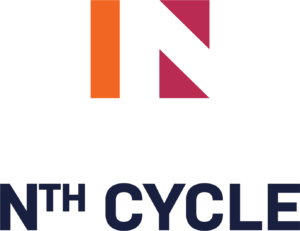
Project Abstract:
Demand for critical minerals to power the energy transition is growing exponentially. Yet, we know mining deeper and broader, and building landfills higher and wider, works against our fight to save the planet. At Nth Cycle, they see the path forward and believe all the critical minerals needed for the energy transition are already in circulation today. The company has now developed a clean and profitable way of retrieving them.
At Nth Cycle, they are taking a different approach to expanding the supply of critical minerals for the clean energy revolution. The team leverages the power of electro-extraction: clean and modular technology for reliably recovering critical minerals from e-waste and low-grade mine tailings using electricity.
Nth Cycle works with battery recyclers and miners. Their customizable and clean electro-extraction technology installs onsite to recover critical minerals from separated e-waste, low-grade ore, and mine tailings. They are the heart of metals processing – the crucial step that profitably separates critical minerals from other elements, transforming them into production-grade feedstocks for the clean energy transition.
Bio:
Megan O’Connor is an environmental engineer and chemist who has 7 years’ experience in developing carbon nanotube membrane separation technologies. Megan developed the unique hard-tech that uses electro-extraction to turn battery recycling waste streams into profitable commodities. Nth Cycle outputs are metal hydroxides that can be sold to hydrometallurgical refineries for reuse in lithium-ion cathode manufacturing lines. She holds a PhD in Civil and Environmental Engineering from Duke University and is a graduate of the second cohort of Innovation Crossroads at Oak Ridge National Laboratory.

Project Abstract:
Demand for critical minerals to power the energy transition is growing exponentially. Yet, we know mining deeper and broader, and building landfills higher and wider, works against our fight to save the planet. At Nth Cycle, they see the path forward and believe all the critical minerals needed for the energy transition are already in circulation today. The company has now developed a clean and profitable way of retrieving them.
At Nth Cycle, they are taking a different approach to expanding the supply of critical minerals for the clean energy revolution. The team leverages the power of electro-extraction: clean and modular technology for reliably recovering critical minerals from e-waste and low-grade mine tailings using electricity.
Nth Cycle works with battery recyclers and miners. Their customizable and clean electro-extraction technology installs onsite to recover critical minerals from separated e-waste, low-grade ore, and mine tailings. They are the heart of metals processing – the crucial step that profitably separates critical minerals from other elements, transforming them into production-grade feedstocks for the clean energy transition.
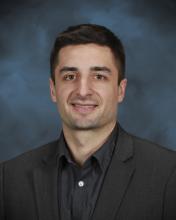
Matthew Smith
Bio: Matthew Smith’s new class of high thermal conductivity plastic composite materials aim to improve heat dissipation, allowing for metal replacement and light-weighting, cost and component…

Matthew Smith
TCPoly, Co-Founder & CEO
Bio:
Matthew Smith’s new class of high thermal conductivity plastic composite materials aim to improve heat dissipation, allowing for metal replacement and light-weighting, cost and component reductions, and improved performance and reliability. These materials also exhibit the unique ability to be 3D printed, allowing thermal engineers to rapidly and inexpensively prototype multi-functional thermal solutions and enabling the design of heat transfer products that cannot be manufactured using traditional methods. He holds a PhD in materials science and engineering from the Georgia Institute of Technology and is a graduate of the second cohort of Innovation Crossroads at Oak Ridge National Laboratory.
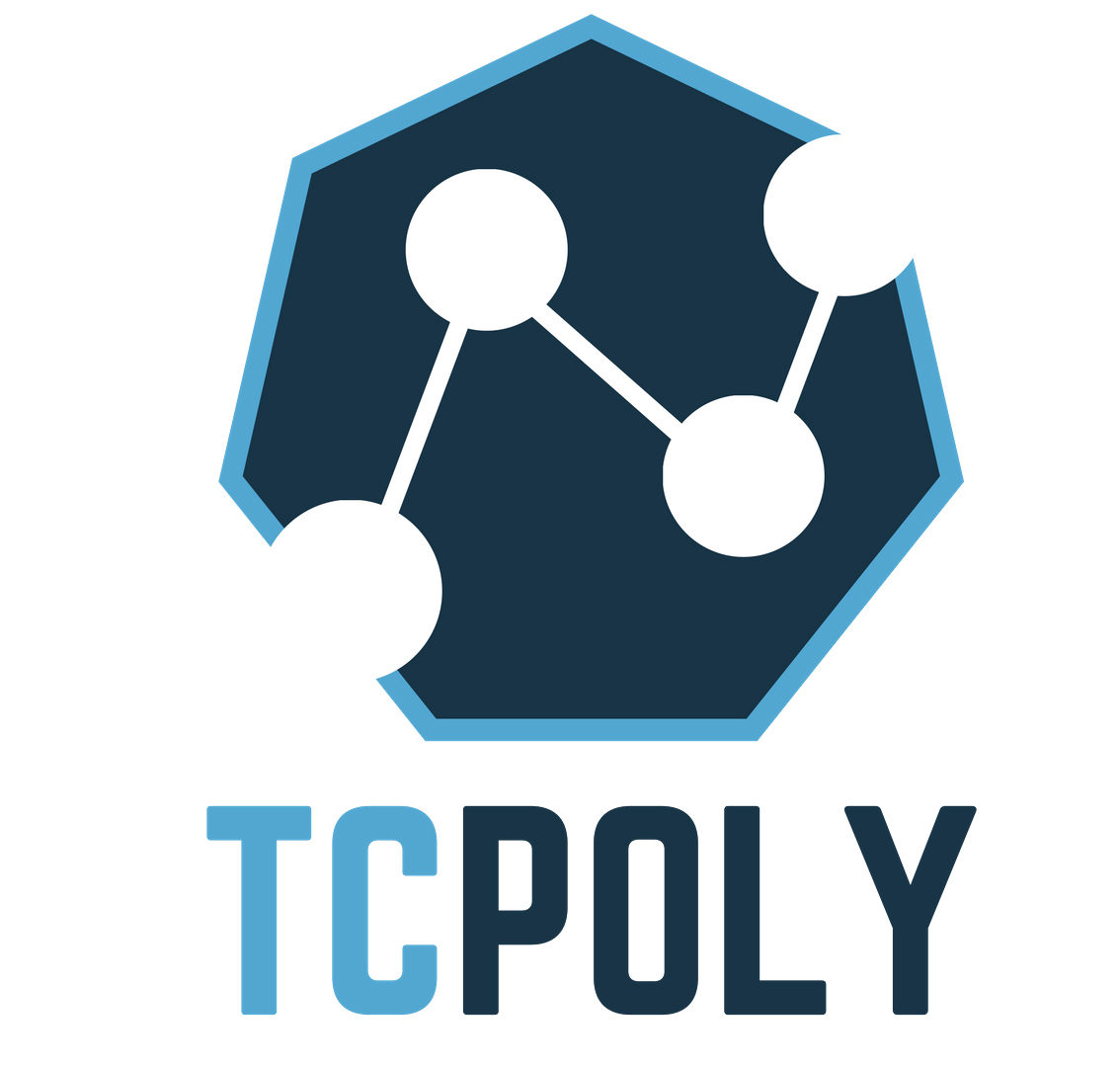
Project Abstract:
TCPoly is an advanced materials company that has developed high thermal conductivity 3D printing filaments and use their patented materials to fabricate thermally conductive tooling, heat exchangers, and other thermal management devices. TCPoly’s vision is to enable high volume 3D printing manufacturing by combining the design freedom of low-cost FDM production with their functional materials to produce new, value-add products. As 3D printing technology continues to mature, TCPoly will leverage IP in materials, thermal products, and printing hardware and software to enable companies to own the manufacturing process and farm 3D print their own functional products.
Bio:
Matthew Smith’s new class of high thermal conductivity plastic composite materials aim to improve heat dissipation, allowing for metal replacement and light-weighting, cost and component reductions, and improved performance and reliability. These materials also exhibit the unique ability to be 3D printed, allowing thermal engineers to rapidly and inexpensively prototype multi-functional thermal solutions and enabling the design of heat transfer products that cannot be manufactured using traditional methods. He holds a PhD in materials science and engineering from the Georgia Institute of Technology and is a graduate of the second cohort of Innovation Crossroads at Oak Ridge National Laboratory.

Project Abstract:
TCPoly is an advanced materials company that has developed high thermal conductivity 3D printing filaments and use their patented materials to fabricate thermally conductive tooling, heat exchangers, and other thermal management devices. TCPoly’s vision is to enable high volume 3D printing manufacturing by combining the design freedom of low-cost FDM production with their functional materials to produce new, value-add products. As 3D printing technology continues to mature, TCPoly will leverage IP in materials, thermal products, and printing hardware and software to enable companies to own the manufacturing process and farm 3D print their own functional products.
Cohort 3 (2019-2021)
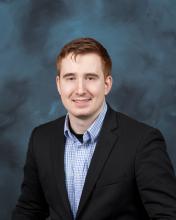
Jesse Claypoole
Bio: Jesse Claypoole is developing a roll-to-roll, manufactured, active multispectral light field (AMLF) micro-optics architecture for applications including autonomous surgery, industrial…

Jesse Claypoole
MantaPoole Technologies, Founder & CEO
Bio:
Jesse Claypoole is developing a roll-to-roll, manufactured, active multispectral light field (AMLF) micro-optics architecture for applications including autonomous surgery, industrial manufacturing, robotic farming, and real time robot vision. Jesse earned a PhD in Nanoscale Science at the State University of New York Polytechnic Institute and is the founder and CEO of MantaPoole Technologies.
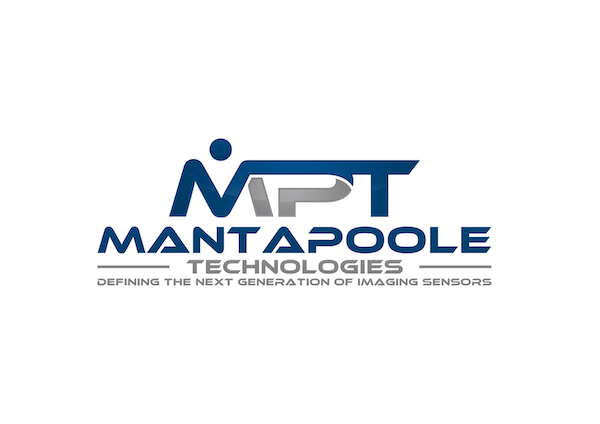
Project Abstract:
With the development and proliferation of smart machines that can increasingly autonomously interact with the real work, it is important that these smart machines be increasingly able to make decisions based on real world variables. In order to make these decisions, these smart machines will need the correct amount and type of information and essentially the capabilities of these smart machines are limited by the capabilities of their sensors. In order to address this problem, MantaPoole Technologies is developing a next generation imaging solution that can enable machines to see the “what” and “where” of their application in a single camera form factor. This advanced capability is enabled by the novel optical system MantaPoole Technologies is developing called Plenoptics 3.0. Plenoptics 3.0 will enable the capture of both spectral and depth information without a reduction of the image quality. This advanced imaging solution will enable smart machines to tell what an object is made of, its shape, and where it is.
Bio:
Jesse Claypoole is developing a roll-to-roll, manufactured, active multispectral light field (AMLF) micro-optics architecture for applications including autonomous surgery, industrial manufacturing, robotic farming, and real time robot vision. Jesse earned a PhD in Nanoscale Science at the State University of New York Polytechnic Institute and is the founder and CEO of MantaPoole Technologies.

Project Abstract:
With the development and proliferation of smart machines that can increasingly autonomously interact with the real work, it is important that these smart machines be increasingly able to make decisions based on real world variables. In order to make these decisions, these smart machines will need the correct amount and type of information and essentially the capabilities of these smart machines are limited by the capabilities of their sensors. In order to address this problem, MantaPoole Technologies is developing a next generation imaging solution that can enable machines to see the “what” and “where” of their application in a single camera form factor. This advanced capability is enabled by the novel optical system MantaPoole Technologies is developing called Plenoptics 3.0. Plenoptics 3.0 will enable the capture of both spectral and depth information without a reduction of the image quality. This advanced imaging solution will enable smart machines to tell what an object is made of, its shape, and where it is.
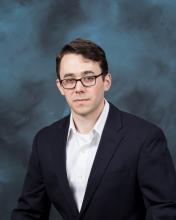
William Fitzhugh
Bio: American Nanotechnologies, Inc. (ANI) is developing material processing technology for purification of high-value nanomaterials. Such material processing technology is critical to…

William Fitzhugh
American Nanotechnologies, Founder & CEO
Bio:
American Nanotechnologies, Inc. (ANI) is developing material processing technology for purification of high-value nanomaterials. Such material processing technology is critical to developing viable supplies supply chains for next-gen electronics. ANI was founded by CEO Will Fitzhugh who received his PhD in Applied Physics from Harvard University.

Project Abstract:
Nanomaterials, such as carbon nanotubes, have been a major focus of R&D for next-gen electronics over the past two decades. Despite remarkable performance of such devices in laboratory settings, commercialization has been hampered by the lack of an economically viable supply chain for the underlying nanomaterials. Many of these materials can be synthesized at industrial scale but require post-synthesis purification that cannot be performed cost-effectively. American Nanotechnologies’ breakthrough processing technology will finally close this gap, allowing these remarkable devices to final transition out of the lab and into commercial adoption.
Bio:
American Nanotechnologies, Inc. (ANI) is developing material processing technology for purification of high-value nanomaterials. Such material processing technology is critical to developing viable supplies supply chains for next-gen electronics. ANI was founded by CEO Will Fitzhugh who received his PhD in Applied Physics from Harvard University.
Project Abstract:
Nanomaterials, such as carbon nanotubes, have been a major focus of R&D for next-gen electronics over the past two decades. Despite remarkable performance of such devices in laboratory settings, commercialization has been hampered by the lack of an economically viable supply chain for the underlying nanomaterials. Many of these materials can be synthesized at industrial scale but require post-synthesis purification that cannot be performed cost-effectively. American Nanotechnologies’ breakthrough processing technology will finally close this gap, allowing these remarkable devices to final transition out of the lab and into commercial adoption.

Hicham Ghossein
Bio: Endeavor Composites is designing and implementing an innovative mixer system for the hydroentanglement process that offers several advantages over the current fiber dispersion techniques. …

Hicham Ghossein
Endeavor Composites, Founder & CEO
Bio:
Endeavor Composites is designing and implementing an innovative mixer system for the hydroentanglement process that offers several advantages over the current fiber dispersion techniques. Hicham earned a PhD in Mechanical Engineering from the University of Tennessee, Knoxville.

Project Abstract:
Endeavor Composites, Inc. was founded based on technology exclusively licensed from the University of Tennessee, Knoxville (UTK) and is implementing an innovative mixer system for the hydroentanglement process that offers several advantages over the current fiber dispersion techniques. The innovation evolved around the ability to disperse long (one to one and half inch) carbon fiber (CF) to produce, in a continuous scale, defect free non-woven mats and preforms with excellent quality control (density std. deviation bellow 3%).
Bio:
Endeavor Composites is designing and implementing an innovative mixer system for the hydroentanglement process that offers several advantages over the current fiber dispersion techniques. Hicham earned a PhD in Mechanical Engineering from the University of Tennessee, Knoxville.

Project Abstract:
Endeavor Composites, Inc. was founded based on technology exclusively licensed from the University of Tennessee, Knoxville (UTK) and is implementing an innovative mixer system for the hydroentanglement process that offers several advantages over the current fiber dispersion techniques. The innovation evolved around the ability to disperse long (one to one and half inch) carbon fiber (CF) to produce, in a continuous scale, defect free non-woven mats and preforms with excellent quality control (density std. deviation bellow 3%).
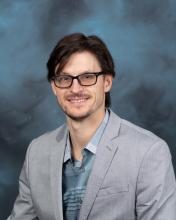
Alex Lewis
Bio: Electro-Active Technologies was spun out of Oak Ridge National Laboratory in 2017 and has gone through multiple accelerators in addition to Innovation Crossroads including IndieBio, Plug…

Alex Lewis
Electro-Active Technologies, Co-founder & CEO
Bio:
Electro-Active Technologies was spun out of Oak Ridge National Laboratory in 2017 and has gone through multiple accelerators in addition to Innovation Crossroads including IndieBio, Plug and Play, H2 Refuel, and MCorps/Scale 4 ClimateTech. The company is developing a modular system for converting food waste and electricity into low-cost, green hydrogen. Alex earned a PhD in Energy Science and Engineering from the University of Tennessee, Knoxville.

Project Abstract:
Electro-Active Technologies is developing a process known as microbial electrolysis, which leverages a robust microbial community that grows as a biofilm on an electrode and can actually produce electrons and protons directly from almost any organic waste stream. The protons and electrons produced by the microbes, in addition to about 1 V of additional electricity, are used to make hydrogen separately in the system with high efficiency and purity. This technology can enable companies, waste haulers and municipalities to reduce waste while producing low-cost zero emission fuel in the form of hydrogen. As a company they have received $2.1M in funds mainly from private investment and have also participated in a number of accelerators to advance the business, technical, and manufacturing readiness level of the company, scaling up more than 100-fold over the last 2 years. They are taking a stack approach to scale-up, similar to battery and fuel cell stacks, utilizing smaller units and replicating them to make larger systems, minimizing risks on the biology side. Electro-Active currently have a beta-prototype tested for the target performance and are in the planning stages on two pilots that will contain commercially sized reactor units, enabling them to move rapidly to commercial scale through unit replication and manufacturing after pilot demonstrations.
Bio:
Electro-Active Technologies was spun out of Oak Ridge National Laboratory in 2017 and has gone through multiple accelerators in addition to Innovation Crossroads including IndieBio, Plug and Play, H2 Refuel, and MCorps/Scale 4 ClimateTech. The company is developing a modular system for converting food waste and electricity into low-cost, green hydrogen. Alex earned a PhD in Energy Science and Engineering from the University of Tennessee, Knoxville.

Project Abstract:
Electro-Active Technologies is developing a process known as microbial electrolysis, which leverages a robust microbial community that grows as a biofilm on an electrode and can actually produce electrons and protons directly from almost any organic waste stream. The protons and electrons produced by the microbes, in addition to about 1 V of additional electricity, are used to make hydrogen separately in the system with high efficiency and purity. This technology can enable companies, waste haulers and municipalities to reduce waste while producing low-cost zero emission fuel in the form of hydrogen. As a company they have received $2.1M in funds mainly from private investment and have also participated in a number of accelerators to advance the business, technical, and manufacturing readiness level of the company, scaling up more than 100-fold over the last 2 years. They are taking a stack approach to scale-up, similar to battery and fuel cell stacks, utilizing smaller units and replicating them to make larger systems, minimizing risks on the biology side. Electro-Active currently have a beta-prototype tested for the target performance and are in the planning stages on two pilots that will contain commercially sized reactor units, enabling them to move rapidly to commercial scale through unit replication and manufacturing after pilot demonstrations.
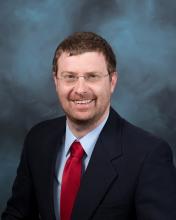
Trevor McQueen
Bio: APT Technologies, LLC is developing advanced cryogenic sample preparation devices designed to significantly enhance sample handling for the transmission electron microscopy (TEM) community…

Trevor McQueen
APT Technologies, LLC, Co-founder & CEO
Bio:
APT Technologies, LLC is developing advanced cryogenic sample preparation devices designed to significantly enhance sample handling for the transmission electron microscopy (TEM) community. Trevor McQueen, the founder and CEO, holds a PhD in chemistry from Stanford University.
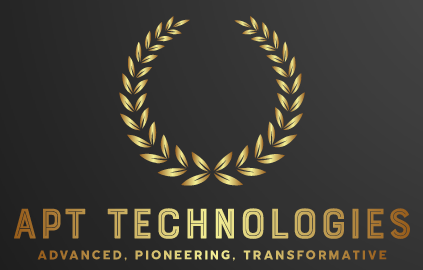
Project Abstract:
APT Technologies, LLC, formerly known as Neptune Fluid Flow Systems LLC, is a leading engineering design firm specializing in the customization of microfluidic transferring systems, with a strong emphasis on sample preparation, delivery, processing, handling, and testing in research and development. Founded in 2016 by Dr. Trevor McQueen, APT Technologies is committed to the principles of reliability, reproducibility, and repeatability, striving to deliver high-quality products and services to its customers.
The company's mission is to assist structural biologists and material scientists by making cryo-transmission electron microscopy (cryo-TEM) a reliable, reproducible, and repeatable method to visualize and study three-dimensional soft material structures, thereby advancing drug design and the advanced manufacturing industry in the U.S.
By providing these advanced tools and services, APT Technologies empowers researchers to explore the fundamental structures of biomolecules and soft matter materials, facilitating life-changing discoveries in healthcare and manufacturing.
Bio:
APT Technologies, LLC is developing advanced cryogenic sample preparation devices designed to significantly enhance sample handling for the transmission electron microscopy (TEM) community. Trevor McQueen, the founder and CEO, holds a PhD in chemistry from Stanford University.

Project Abstract:
APT Technologies, LLC, formerly known as Neptune Fluid Flow Systems LLC, is a leading engineering design firm specializing in the customization of microfluidic transferring systems, with a strong emphasis on sample preparation, delivery, processing, handling, and testing in research and development. Founded in 2016 by Dr. Trevor McQueen, APT Technologies is committed to the principles of reliability, reproducibility, and repeatability, striving to deliver high-quality products and services to its customers.
The company's mission is to assist structural biologists and material scientists by making cryo-transmission electron microscopy (cryo-TEM) a reliable, reproducible, and repeatable method to visualize and study three-dimensional soft material structures, thereby advancing drug design and the advanced manufacturing industry in the U.S.
By providing these advanced tools and services, APT Technologies empowers researchers to explore the fundamental structures of biomolecules and soft matter materials, facilitating life-changing discoveries in healthcare and manufacturing.

Leila Safavi
Bio: Leila is the co-founder and CEO of Purist, a company based on a technology she co-invented during her Ph.D. studies. Purist's focus is developing a technology to be implemented in existing…

Leila Safavi
Purist, Inc., Co-founder & CEO
Bio:
Leila is the co-founder and CEO of Purist, a company based on a technology she co-invented during her Ph.D. studies. Purist's focus is developing a technology to be implemented in existing nuclear reactors to produce medical-grade radioactive ingredients. These radioactive ingredients are time-sensitive materials used daily to treat and diagnose life-threatening diseases such as cancer. Leila earned her Ph.D./M.S. in Chemical and Biochemical Engineering and B.S. in Chemistry, all from the University of California, Irvine (UC-Irvine). During her time at UC-Irvine, she became a licensed nuclear reactor operator by the U.S. Nuclear Regulatory Commission and maintained this license for over five years. In 2017, Leila co-founded Purist with her former Ph.D. advisor Dr. Mikael Nilsson and was appointed as Chief Executive Officer. In this role, she has won first place in the 2017 UC-Irvine New Venture Business Plan competition, been the recipient of the 2018 Orange County Engineering Council's Project Achievement award, and the 2018 Best Female Owned Business award from the UC-Irvine ANTrepreneur Center. In February of 2021, Leila was selected to be in the first class of 250 entrepreneurs for Forbes's NEXT 1000 list.
In 2019 Purist was awarded a Small Business Innovation Research (SBIR) grant from the National Institutes of Health. The SBIR award, combined with the Oak Ridge National Laboratory's Innovation Crossroads program, has provided funding and resources to accelerate Purist's technology towards commercialization.

Project Abstract:
Medical radioisotopes are time sensitive radioactive ingredients that are used for diagnosis and treatment of life-threatening diseases such as cancer. In recent years the availability of these ingredients has become a source of concern due to dependence on a limited number of aging production facilities worldwide. To overcome this concern and meet the growing demand for medical radioisotopes, Purist is developing a technology to enable a distributed network of small-scale and underutilized nuclear reactors produce high purity radioisotopes. Purist will complement the efforts of existing production facilities to serve the current and growing demand of the medical radioisotope market, increase domestic radioisotope production capabilities, and work towards ensuring no medical procedure is compromised due to radioisotope supply constraints.
Bio:
Leila is the co-founder and CEO of Purist, a company based on a technology she co-invented during her Ph.D. studies. Purist's focus is developing a technology to be implemented in existing nuclear reactors to produce medical-grade radioactive ingredients. These radioactive ingredients are time-sensitive materials used daily to treat and diagnose life-threatening diseases such as cancer. Leila earned her Ph.D./M.S. in Chemical and Biochemical Engineering and B.S. in Chemistry, all from the University of California, Irvine (UC-Irvine). During her time at UC-Irvine, she became a licensed nuclear reactor operator by the U.S. Nuclear Regulatory Commission and maintained this license for over five years. In 2017, Leila co-founded Purist with her former Ph.D. advisor Dr. Mikael Nilsson and was appointed as Chief Executive Officer. In this role, she has won first place in the 2017 UC-Irvine New Venture Business Plan competition, been the recipient of the 2018 Orange County Engineering Council's Project Achievement award, and the 2018 Best Female Owned Business award from the UC-Irvine ANTrepreneur Center. In February of 2021, Leila was selected to be in the first class of 250 entrepreneurs for Forbes's NEXT 1000 list.
In 2019 Purist was awarded a Small Business Innovation Research (SBIR) grant from the National Institutes of Health. The SBIR award, combined with the Oak Ridge National Laboratory's Innovation Crossroads program, has provided funding and resources to accelerate Purist's technology towards commercialization.

Project Abstract:
Medical radioisotopes are time sensitive radioactive ingredients that are used for diagnosis and treatment of life-threatening diseases such as cancer. In recent years the availability of these ingredients has become a source of concern due to dependence on a limited number of aging production facilities worldwide. To overcome this concern and meet the growing demand for medical radioisotopes, Purist is developing a technology to enable a distributed network of small-scale and underutilized nuclear reactors produce high purity radioisotopes. Purist will complement the efforts of existing production facilities to serve the current and growing demand of the medical radioisotope market, increase domestic radioisotope production capabilities, and work towards ensuring no medical procedure is compromised due to radioisotope supply constraints.
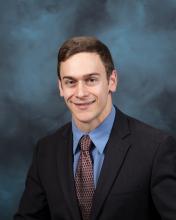
Jesse Thornburg
Bio: Grid Fruit is developing and evaluating a novel technology and operating framework for monitoring and control of commercial refrigeration systems installed at food retailers. Jesse earned a…

Jesse Thornburg
Grid Fruit, Co-founder & CEO
Bio:
Grid Fruit is developing and evaluating a novel technology and operating framework for monitoring and control of commercial refrigeration systems installed at food retailers. Jesse earned a PhD in Electrical and Computer Engineering from Carnegie Mellon University.

Project Abstract:
Grid Fruit uses artificial intelligence (AI) and data to keep food fresh while reducing the energy needed for commercial refrigeration. The technology simultaneously procures savings for food retailers and provides grid services for electrical utilities.
Grid Fruit evaluates and then improves the performance of refrigeration systems in terms of energy and food quality. They plan to leverage this information for intelligent asset management including fault detection and predictive maintenance. Grid Fruit will also improve performance of refrigeration systems by providing custom operational recommendations. Finally, with better monitoring and control the technology will be able to leverage thermal storage capacity of retailer refrigeration systems as energy storage (thermal batteries) for the grid.
Bio:
Grid Fruit is developing and evaluating a novel technology and operating framework for monitoring and control of commercial refrigeration systems installed at food retailers. Jesse earned a PhD in Electrical and Computer Engineering from Carnegie Mellon University.

Project Abstract:
Grid Fruit uses artificial intelligence (AI) and data to keep food fresh while reducing the energy needed for commercial refrigeration. The technology simultaneously procures savings for food retailers and provides grid services for electrical utilities.
Grid Fruit evaluates and then improves the performance of refrigeration systems in terms of energy and food quality. They plan to leverage this information for intelligent asset management including fault detection and predictive maintenance. Grid Fruit will also improve performance of refrigeration systems by providing custom operational recommendations. Finally, with better monitoring and control the technology will be able to leverage thermal storage capacity of retailer refrigeration systems as energy storage (thermal batteries) for the grid.
Cohort 4 (2020-2022)
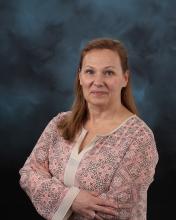
Renee Carder
Bio:PixelEXX Systems is revolutionizing the future of imaging by enabling you to capture, analyze, and interpret the world around us with remarkable detail. With visual data accounting for 90% of the…

Renee Carder
PixelEXX Systems, Co-founder & Vice President
Bio:
PixelEXX Systems is revolutionizing the future of imaging by enabling you to capture, analyze, and interpret the world around us with remarkable detail. With visual data accounting for 90% of the information we process—at a rate 60,000 times faster than text—accurate and efficient visual analysis is crucial across all industries. From self-driving cars and drones to medical imaging devices and robotics, our cutting-edge technology is integrated into a wide range of applications. PixelEXX leverages nano-sized pixels to capture more light, providing high-performance image sensors and cameras that offer superior resolution, enhanced sensitivity and dynamic range, and vibrant color—all in an unprecedented form factor.
Renee, a visual neuroscientist, brings extensive expertise in designing and analyzing imaging-based experiments to extract complex information. She holds a PhD in Neurobiology, Anatomy and Cell Science, and Neuroscience from the University of Pittsburgh Medical School.

Project Abstract:
Photon detection is pivotal for both fundamental and applied sciences, impacting areas such as light/laser detection, photography, astronomy, quantum information science, medical imaging, microscopy, and communications. The performance of photon detectors varies based on three key factors: noise characteristics, which limit the minimum signal intensity that can be observed; saturation characteristics, which determine the maximum signal intensity that can be observed; and geometric, absorption, and signal conversion characteristics, which affect how much of the incident signal can be measured.
Our company is developing a new class of solid-state photomultipliers that leverage optical resonances in semiconductor materials to enhance light absorption and detection. These advanced sensors use internal avalanche multiplication to generate large output signals, significantly improving photon detection and counting with high resolution and single-photon sensitivity. Initial applications focus on devices used with scintillation detectors, which are crucial for detecting radiation in industrial, defense, medical, and basic research fields.
Bio:
PixelEXX Systems is revolutionizing the future of imaging by enabling you to capture, analyze, and interpret the world around us with remarkable detail. With visual data accounting for 90% of the information we process—at a rate 60,000 times faster than text—accurate and efficient visual analysis is crucial across all industries. From self-driving cars and drones to medical imaging devices and robotics, our cutting-edge technology is integrated into a wide range of applications. PixelEXX leverages nano-sized pixels to capture more light, providing high-performance image sensors and cameras that offer superior resolution, enhanced sensitivity and dynamic range, and vibrant color—all in an unprecedented form factor.
Renee, a visual neuroscientist, brings extensive expertise in designing and analyzing imaging-based experiments to extract complex information. She holds a PhD in Neurobiology, Anatomy and Cell Science, and Neuroscience from the University of Pittsburgh Medical School.

Project Abstract:
Photon detection is pivotal for both fundamental and applied sciences, impacting areas such as light/laser detection, photography, astronomy, quantum information science, medical imaging, microscopy, and communications. The performance of photon detectors varies based on three key factors: noise characteristics, which limit the minimum signal intensity that can be observed; saturation characteristics, which determine the maximum signal intensity that can be observed; and geometric, absorption, and signal conversion characteristics, which affect how much of the incident signal can be measured.
Our company is developing a new class of solid-state photomultipliers that leverage optical resonances in semiconductor materials to enhance light absorption and detection. These advanced sensors use internal avalanche multiplication to generate large output signals, significantly improving photon detection and counting with high resolution and single-photon sensitivity. Initial applications focus on devices used with scintillation detectors, which are crucial for detecting radiation in industrial, defense, medical, and basic research fields.

Danielle Castley
Bio:Danielle Castley is now the President of Pelican Energy Partners, where she leads efforts in advancing energy solutions. Previously, Danielle was focused on developing a high-temperature,…

Danielle Castley
Becq, Founder & CEO
Bio:
Danielle Castley is now the President of Pelican Energy Partners, where she leads efforts in advancing energy solutions. Previously, Danielle was focused on developing a high-temperature, lightweight neutron-shielding technology designed to reduce costs and enhance safety in the nuclear industry. Her technology operates at a higher temperature than existing polymer-based neutron-shielding products, offering resistance up to 300°C compared to the typical 180°C. This advancement opens up significant opportunities for deploying neutron shielding materials in higher-temperature locations within reactor containment and improves safety margins in applications designed for lower temperature shielding. Danielle holds a PhD in Materials Science and Engineering from Dartmouth College and is the founder of Becq.
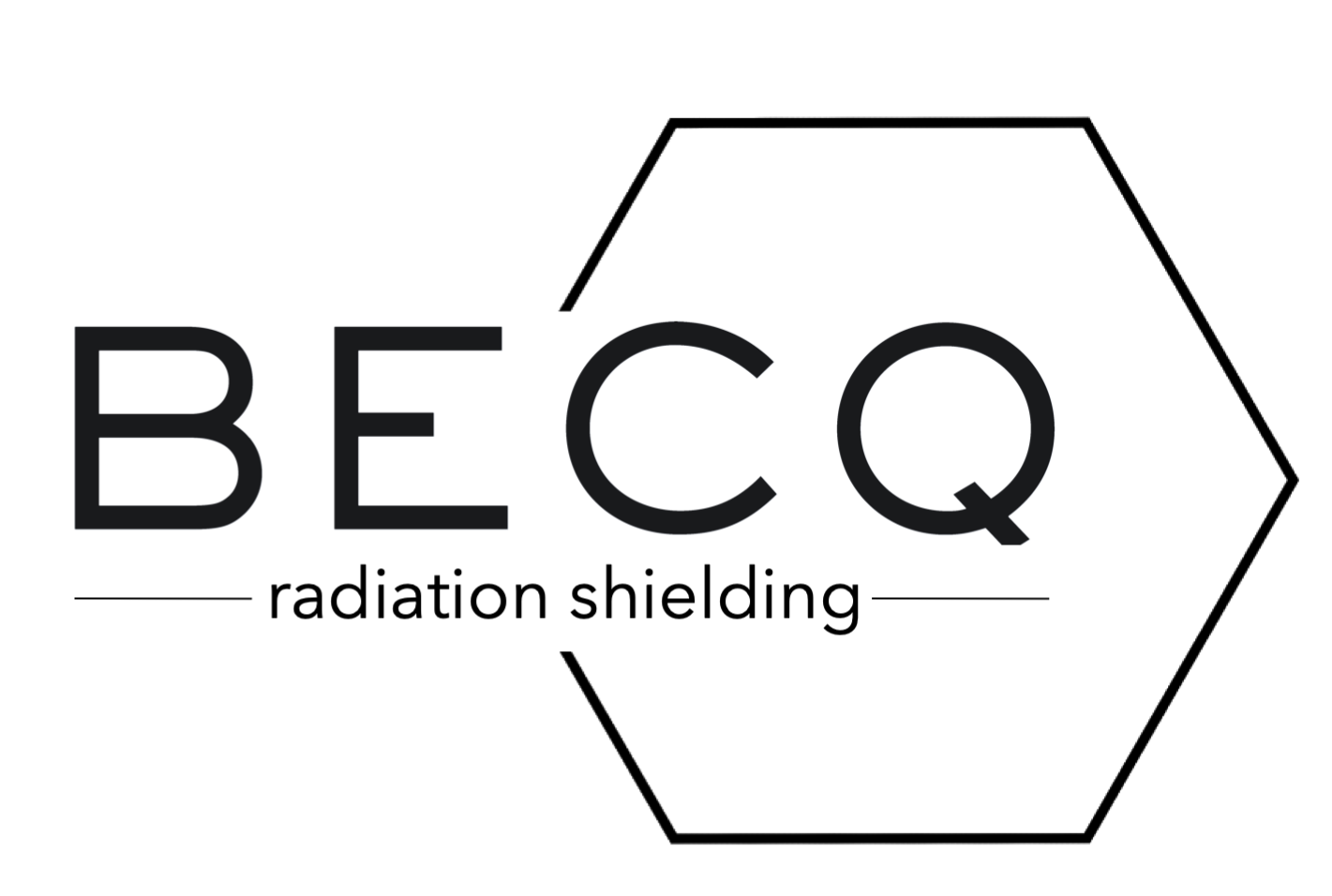
Project Abstract:
Becq is revolutionizing radiation shielding materials with innovative technology designed to enhance safety and reduce costs in the nuclear industry. Specializing in neutron shielding technology, Becq addresses a market where innovation has been stagnant for decades. The company’s flagship product, NE-300, is a lightweight, high-temperature neutron shielding material. NE-300 offers a significant advancement over existing materials with its resistance to temperatures of up to 300°C, compared to the standard 180°C. This enhanced temperature tolerance enables the deployment of neutron shielding in higher-temperature locations within reactor containment and improves safety margins in applications initially designed for lower temperature shielding.
While NE-300 already met and exceeded many nuclear industry requirements, the Innovation Crossroads program at Oak Ridge National Laboratory provided Becq with the opportunity to conduct further development and validation needed for long-term use and commercialization.
Becq aimed to lead the $1 billion international neutron shielding market within the next decade, establishing itself as the dominant supplier to the commercial nuclear industry while expanding into defense and space markets. The company’s long-term vision was to become the largest radiation shielding provider and a major materials supplier globally.
Bio:
Danielle Castley is now the President of Pelican Energy Partners, where she leads efforts in advancing energy solutions. Previously, Danielle was focused on developing a high-temperature, lightweight neutron-shielding technology designed to reduce costs and enhance safety in the nuclear industry. Her technology operates at a higher temperature than existing polymer-based neutron-shielding products, offering resistance up to 300°C compared to the typical 180°C. This advancement opens up significant opportunities for deploying neutron shielding materials in higher-temperature locations within reactor containment and improves safety margins in applications designed for lower temperature shielding. Danielle holds a PhD in Materials Science and Engineering from Dartmouth College and is the founder of Becq.

Project Abstract:
Becq is revolutionizing radiation shielding materials with innovative technology designed to enhance safety and reduce costs in the nuclear industry. Specializing in neutron shielding technology, Becq addresses a market where innovation has been stagnant for decades. The company’s flagship product, NE-300, is a lightweight, high-temperature neutron shielding material. NE-300 offers a significant advancement over existing materials with its resistance to temperatures of up to 300°C, compared to the standard 180°C. This enhanced temperature tolerance enables the deployment of neutron shielding in higher-temperature locations within reactor containment and improves safety margins in applications initially designed for lower temperature shielding.
While NE-300 already met and exceeded many nuclear industry requirements, the Innovation Crossroads program at Oak Ridge National Laboratory provided Becq with the opportunity to conduct further development and validation needed for long-term use and commercialization.
Becq aimed to lead the $1 billion international neutron shielding market within the next decade, establishing itself as the dominant supplier to the commercial nuclear industry while expanding into defense and space markets. The company’s long-term vision was to become the largest radiation shielding provider and a major materials supplier globally.
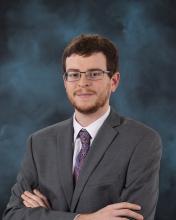
Joe Fortenbaugh
Actinic, LLC
Bio:Joe Fortenbaugh is now a AAAS Science & Technology Policy Fellow at the US Department of Defense. Previously, while participating in the Innovation Crossroads program, Joe focused on…

Joe Fortenbaugh
Actinic, Co-founder & CEO
Bio:
Joe Fortenbaugh is now a AAAS Science & Technology Policy Fellow at the US Department of Defense. Previously, while participating in the Innovation Crossroads program, Joe focused on designing, developing, and testing formulations of thermally cured thermosets. His work aimed to enable rapid, on-demand curing of a variety of thermally cured thermoset polymers using photothermal heating. Joe’s goal was to develop silicone and epoxy resin formulations for use in additive manufacturing, incorporating fillers such as carbon fiber, ceramics, graphene, metals, and metal oxides. He holds a PhD in Chemistry from Penn State University.

Project Abstract:
Actinic specializes in advancing thermally cured thermosets for the 3D printing market. They reformulate commercially available materials and develop new formulations specifically designed for 3D printing applications. Their technology supports extremely rapid heating and cooling cycles (sub-microsecond), enabling efficient 3D printing of these advanced materials. Actinic is currently expanding its material portfolio and developing a custom-built 3D printing system. This innovation holds particular significance for the Department of Defense (DoD) and industrial applications, where on-site manufacturing can address critical challenges in prototyping, supply chain management, and logistics.
Bio:
Joe Fortenbaugh is now a AAAS Science & Technology Policy Fellow at the US Department of Defense. Previously, while participating in the Innovation Crossroads program, Joe focused on designing, developing, and testing formulations of thermally cured thermosets. His work aimed to enable rapid, on-demand curing of a variety of thermally cured thermoset polymers using photothermal heating. Joe’s goal was to develop silicone and epoxy resin formulations for use in additive manufacturing, incorporating fillers such as carbon fiber, ceramics, graphene, metals, and metal oxides. He holds a PhD in Chemistry from Penn State University.

Project Abstract:
Actinic specializes in advancing thermally cured thermosets for the 3D printing market. They reformulate commercially available materials and develop new formulations specifically designed for 3D printing applications. Their technology supports extremely rapid heating and cooling cycles (sub-microsecond), enabling efficient 3D printing of these advanced materials. Actinic is currently expanding its material portfolio and developing a custom-built 3D printing system. This innovation holds particular significance for the Department of Defense (DoD) and industrial applications, where on-site manufacturing can address critical challenges in prototyping, supply chain management, and logistics.
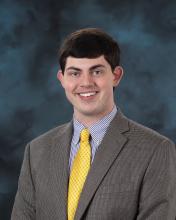
Thomas Foulkes
AquaQuant Laboratories Inc.
Bio:Thomas Foulkes is deploying the next generation of high-performance central processing units (CPUs) and graphics processing units (GPUs) to meet the power demands of elastic cloud computing, big…

Thomas Foulkes
AquaQuant Laboratories, Founder & CEO
Bio:
Thomas Foulkes is deploying the next generation of high-performance central processing units (CPUs) and graphics processing units (GPUs) to meet the power demands of elastic cloud computing, big data analytics, complex simulations, and artificial intelligence. His technology enhances computational density by using direct water immersion cooling across nanoengineered, durable, and scalable hierarchical porous coatings applied holistically to electronics. Foulkes holds a PhD in Electrical Engineering from the University of Illinois at Urbana-Champaign.

Project Abstract:
AquaQuant Laboratories Inc. is advancing the field of high-performance computation by commercializing scalable nanostructured surfaces designed to enhance both the speed (Gflops) and density (Gflops/m³) of computational systems through innovative two-phase, water immersion cooling.
Effective thermal management of electronics requires both nano- and macro-scale approaches. Thomas Foulkes, having conducted extensive research on advanced cooling techniques and electro-thermal co-design, has focused on increasing the power density of electric vehicle converters. In 2017, he founded AquaQuant Laboratories Inc. (AQL) to address the electro-thermal challenges facing next-generation data centers.
Bio:
Thomas Foulkes is deploying the next generation of high-performance central processing units (CPUs) and graphics processing units (GPUs) to meet the power demands of elastic cloud computing, big data analytics, complex simulations, and artificial intelligence. His technology enhances computational density by using direct water immersion cooling across nanoengineered, durable, and scalable hierarchical porous coatings applied holistically to electronics. Foulkes holds a PhD in Electrical Engineering from the University of Illinois at Urbana-Champaign.

Project Abstract:
AquaQuant Laboratories Inc. is advancing the field of high-performance computation by commercializing scalable nanostructured surfaces designed to enhance both the speed (Gflops) and density (Gflops/m³) of computational systems through innovative two-phase, water immersion cooling.
Effective thermal management of electronics requires both nano- and macro-scale approaches. Thomas Foulkes, having conducted extensive research on advanced cooling techniques and electro-thermal co-design, has focused on increasing the power density of electric vehicle converters. In 2017, he founded AquaQuant Laboratories Inc. (AQL) to address the electro-thermal challenges facing next-generation data centers.
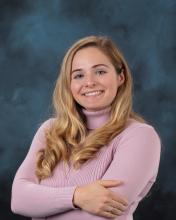
Erica Grant
Quantal Security Inc.
Bio:Erica Grant holds a PhD in Quantum Computation from the University of Tennessee, Knoxville, and a BS in Physics from Virginia Tech. At Virginia Tech, she was an active leader in a service…

Erica Grant
Quantal Security, Founder & CEO
Bio:
Erica Grant holds a PhD in Quantum Computation from the University of Tennessee, Knoxville, and a BS in Physics from Virginia Tech. At Virginia Tech, she was an active leader in a service organization focused on safety and awareness education. This role exposed her to compelling stories and diverse perspectives. During her graduate studies, Erica developed an interest in the DefCon hacking conferences, where she discovered the vulnerabilities in various fields, including smart locks. Recognizing the potential of quantum information to enhance the security of connected devices, she saw an opportunity to apply her expertise to address these critical security challenges.

Project Abstract:
Quantal Security Inc. delivers a cutting-edge solution for safeguarding access to sensitive facilities with its patented hardware and software technology. Their system generates completely random and unpredictable digital keys, ensuring robust protection for a wide range of premises, including government buildings, manufacturing facilities, laboratories, hotels, and hospitals.
Quantal Security’s technology can seamlessly retrofit existing access control systems, offering flexibility whether adapting a specific area or implementing changes across an entire facility. Their innovative hardware features a sleek, modular design with an integrated charging cable and wall-mounting adhesive, making installation discreet and convenient in any environment.
Bio:
Erica Grant holds a PhD in Quantum Computation from the University of Tennessee, Knoxville, and a BS in Physics from Virginia Tech. At Virginia Tech, she was an active leader in a service organization focused on safety and awareness education. This role exposed her to compelling stories and diverse perspectives. During her graduate studies, Erica developed an interest in the DefCon hacking conferences, where she discovered the vulnerabilities in various fields, including smart locks. Recognizing the potential of quantum information to enhance the security of connected devices, she saw an opportunity to apply her expertise to address these critical security challenges.

Project Abstract:
Quantal Security Inc. delivers a cutting-edge solution for safeguarding access to sensitive facilities with its patented hardware and software technology. Their system generates completely random and unpredictable digital keys, ensuring robust protection for a wide range of premises, including government buildings, manufacturing facilities, laboratories, hotels, and hospitals.
Quantal Security’s technology can seamlessly retrofit existing access control systems, offering flexibility whether adapting a specific area or implementing changes across an entire facility. Their innovative hardware features a sleek, modular design with an integrated charging cable and wall-mounting adhesive, making installation discreet and convenient in any environment.
Cohort 5 (2021-2023)
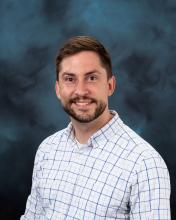
Caleb Alexander
DayLyte Batteries
Bio:While pursuing his Chemical Engineering degree at the University of California, Berkeley, Caleb Alexander served as president of the AIChE chapter and founded both a brewing club and a biodiesel…

Caleb Alexander
DayLyte Batteries, Founder & CEO
Bio:
While pursuing his Chemical Engineering degree at the University of California, Berkeley, Caleb Alexander served as president of the AIChE chapter and founded both a brewing club and a biodiesel club to provide students with hands-on engineering experience. He also took a chemical engineering economics class that introduced him to finance and game theory, which he applied to develop a business plan for a deep-sea rare earth element mining company. This experience sharpened his ability to view problems from a broader perspective and identify impactful solutions.
Caleb’s expertise includes scaling chemical processes to industrial levels, enriched by his background in electrochemistry from UC Berkeley, Li-ion research at Lawrence Berkeley National Laboratory, and a PhD focused on metal-air batteries and fuel cells at the University of Texas, Austin. By analyzing the periodic table and leveraging his diverse experiences, he has focused on developing high-energy, low-cost battery chemistry.
As an alumnus of Innovation Crossroads, Caleb continues to work towards making the Na-Air battery scalable and long-lasting, with a vision for a cleaner, more sustainable world.

Project Abstract:
DayLyte Batteries is pioneering the commercialization of Metal-Air (M-Air) batteries designed to significantly enhance battery energy density, reduce weight by 50%, and lower costs using abundant materials. This breakthrough technology aims to deliver renewable energy on demand, double the range of electric vehicles, and decrease costs, while also enabling innovative applications like drone delivery and electric air taxis.
In collaboration with scientists and facilities at Oak Ridge National Laboratory (ORNL), DayLyte completed a prototype, initiated long-term life testing, and addressed challenges associated with scaling up through roll-to-roll processing. This effort paved the way for widespread adoption of advanced battery solutions in various transportation and energy applications.
Bio:
While pursuing his Chemical Engineering degree at the University of California, Berkeley, Caleb Alexander served as president of the AIChE chapter and founded both a brewing club and a biodiesel club to provide students with hands-on engineering experience. He also took a chemical engineering economics class that introduced him to finance and game theory, which he applied to develop a business plan for a deep-sea rare earth element mining company. This experience sharpened his ability to view problems from a broader perspective and identify impactful solutions.
Caleb’s expertise includes scaling chemical processes to industrial levels, enriched by his background in electrochemistry from UC Berkeley, Li-ion research at Lawrence Berkeley National Laboratory, and a PhD focused on metal-air batteries and fuel cells at the University of Texas, Austin. By analyzing the periodic table and leveraging his diverse experiences, he has focused on developing high-energy, low-cost battery chemistry.
As an alumnus of Innovation Crossroads, Caleb continues to work towards making the Na-Air battery scalable and long-lasting, with a vision for a cleaner, more sustainable world.

Project Abstract:
DayLyte Batteries is pioneering the commercialization of Metal-Air (M-Air) batteries designed to significantly enhance battery energy density, reduce weight by 50%, and lower costs using abundant materials. This breakthrough technology aims to deliver renewable energy on demand, double the range of electric vehicles, and decrease costs, while also enabling innovative applications like drone delivery and electric air taxis.
In collaboration with scientists and facilities at Oak Ridge National Laboratory (ORNL), DayLyte completed a prototype, initiated long-term life testing, and addressed challenges associated with scaling up through roll-to-roll processing. This effort paved the way for widespread adoption of advanced battery solutions in various transportation and energy applications.
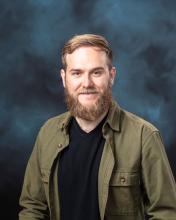
Sam Evans
Unbound Water Technologies
Bio:Sam Evans earned his Bachelor of Science degree in Chemistry from the University of South Carolina in 2015, followed by a Master of Science degree in Chemistry from Georgia Tech in 2017. He…

Sam Evans
Unbound Water Technologies, Founder & CEO
Bio:
Sam Evans earned his Bachelor of Science degree in Chemistry from the University of South Carolina in 2015, followed by a Master of Science degree in Chemistry from Georgia Tech in 2017. He completed his PhD in Energy Science and Engineering in August 2020 at the Bredesen Center for Graduate Education at the University of Tennessee (UTK), a partnership between UTK and Oak Ridge National Laboratory (ORNL).
During his PhD, Sam conducted research at ORNL focusing on the development of magnetic adsorbents for water remediation, as well as projects related to water treatment, lithium-ion removal, and desalination. He has collaborated with start-ups, mid-level companies, and multinational corporations to develop materials, processes, and intellectual property within the energy and water sectors.
Sam’s involvement with ORNL and the Department of Energy’s research programs, along with his work with cutting-edge industry partners, has equipped him for a dynamic, high-technology entrepreneurial career. His research has resulted in 10 publications (including 4 as first author), multiple invention disclosures, and a submitted patent on water remediation systems and materials. As an alumnus of Innovation Crossroads, Sam is well-prepared to continue making significant contributions in his field.

Project Abstract:
At Unbound Water Technologies, we are committed to the sustainable removal of toxic pollutants and materials from concentrated waste sources that contaminate our waterways. Our mission is to develop and commercialize advanced materials for effective water remediation and treatment.
Our innovative approach leverages the internal pore structure of tire-derived carbon to support iron nanoparticles, creating a material with a high effective surface area for pollutant removal. This technology enhances stability to minimize degradation, enables easy separation after adsorption through magnetic properties, and integrates seamlessly into existing on-site systems.
By providing a low-cost, highly efficient solution, our technology facilitates rapid adoption by industries seeking effective water treatment and remediation solutions, contributing to a cleaner and healthier environment.
Bio:
Sam Evans earned his Bachelor of Science degree in Chemistry from the University of South Carolina in 2015, followed by a Master of Science degree in Chemistry from Georgia Tech in 2017. He completed his PhD in Energy Science and Engineering in August 2020 at the Bredesen Center for Graduate Education at the University of Tennessee (UTK), a partnership between UTK and Oak Ridge National Laboratory (ORNL).
During his PhD, Sam conducted research at ORNL focusing on the development of magnetic adsorbents for water remediation, as well as projects related to water treatment, lithium-ion removal, and desalination. He has collaborated with start-ups, mid-level companies, and multinational corporations to develop materials, processes, and intellectual property within the energy and water sectors.
Sam’s involvement with ORNL and the Department of Energy’s research programs, along with his work with cutting-edge industry partners, has equipped him for a dynamic, high-technology entrepreneurial career. His research has resulted in 10 publications (including 4 as first author), multiple invention disclosures, and a submitted patent on water remediation systems and materials. As an alumnus of Innovation Crossroads, Sam is well-prepared to continue making significant contributions in his field.

Project Abstract:
At Unbound Water Technologies, we are committed to the sustainable removal of toxic pollutants and materials from concentrated waste sources that contaminate our waterways. Our mission is to develop and commercialize advanced materials for effective water remediation and treatment.
Our innovative approach leverages the internal pore structure of tire-derived carbon to support iron nanoparticles, creating a material with a high effective surface area for pollutant removal. This technology enhances stability to minimize degradation, enables easy separation after adsorption through magnetic properties, and integrates seamlessly into existing on-site systems.
By providing a low-cost, highly efficient solution, our technology facilitates rapid adoption by industries seeking effective water treatment and remediation solutions, contributing to a cleaner and healthier environment.
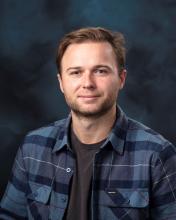
Tommy Gibbons
Hempitecture
Bio:Tommy Gibbons brings a diverse background in corporate finance and early-stage company growth to his role at Hempitecture. His business acumen is complemented by a strong foundation in green…

Tommy Gibbons
Hempitecture, Co-founder & COO
Bio:
Tommy Gibbons brings a diverse background in corporate finance and early-stage company growth to his role at Hempitecture. His business acumen is complemented by a strong foundation in green building, including certification as a LEED Green Associate, recognition as a 2021 Building Technologies Office IMPEL+ innovator, and training from France’s l’École Nationale du Chanvre (National School of Hemp Construction). Additionally, he served as a founding board member and treasurer of the United States Hemp Building Association, a trade association dedicated to the hemp building industry.
Prior to founding Hempitecture in Ketchum, Idaho, Tommy worked at Piper Computers in San Francisco and Goldman Sachs in New York City. He holds a degree from Princeton University’s Woodrow Wilson School of Public Policy, graduating in 2013.
At Hempitecture, Tommy oversees operations and new product development, with a notable focus on HempWool insulation—a non-toxic, high-performance, carbon-negative material designed to significantly reduce a building’s embodied carbon footprint while enhancing occupant health and comfort. In 2021, Hempitecture plans to advance its research and testing of proprietary insulation blends to improve insulation value and fire resistance, and to onshore insulation manufacturing using industrial hemp waste from American farmers. The company also aims to develop additional hemp-based building products, aligning with its mission as a Public Benefit Corporation to create healthy, energy-efficient habitats that positively impact both inhabitants and the environment through carbon dioxide sequestration. In 2020, Tommy was recognized on the Forbes 30 Under 30 list for manufacturing and industry, alongside his co-founder.

Project Abstract:
Hempitecture is revolutionizing sustainable construction with innovative hemp-based products that leverage one of the most efficient and low-resource plants to offset atmospheric carbon dioxide on a large scale.
While operating within the Maximum Building Energy Efficiency Research Laboratory (MAXLAB) at the Building Technologies Research Center, Hempitecture advanced its product roadmap with hemp-based alternatives to conventional building materials such as drywall, vapor barriers, and external insulation. Following the successful launch of HempWool®, a hemp fiber insulation material, the company focused on developing cost-competitive, domestically manufactured products for the market.
Since its inception in 2013, Hempitecture has been at the forefront of producing the most sustainable building materials available. Our plant-based insulation materials are derived from carbon-capturing, renewable agricultural industrial hemp, offering non-toxic, eco-friendly solutions that benefit both people and the planet.
Hempitecture envisions a future where natural, non-toxic materials like HempWool become the industry standard, contributing to significant decarbonization of built environments. Our goal is to create healthier buildings, enhance occupant well-being, and promote a healthier planet through our commitment to sustainable building practices.
Bio:
Tommy Gibbons brings a diverse background in corporate finance and early-stage company growth to his role at Hempitecture. His business acumen is complemented by a strong foundation in green building, including certification as a LEED Green Associate, recognition as a 2021 Building Technologies Office IMPEL+ innovator, and training from France’s l’École Nationale du Chanvre (National School of Hemp Construction). Additionally, he served as a founding board member and treasurer of the United States Hemp Building Association, a trade association dedicated to the hemp building industry.
Prior to founding Hempitecture in Ketchum, Idaho, Tommy worked at Piper Computers in San Francisco and Goldman Sachs in New York City. He holds a degree from Princeton University’s Woodrow Wilson School of Public Policy, graduating in 2013.
At Hempitecture, Tommy oversees operations and new product development, with a notable focus on HempWool insulation—a non-toxic, high-performance, carbon-negative material designed to significantly reduce a building’s embodied carbon footprint while enhancing occupant health and comfort. In 2021, Hempitecture plans to advance its research and testing of proprietary insulation blends to improve insulation value and fire resistance, and to onshore insulation manufacturing using industrial hemp waste from American farmers. The company also aims to develop additional hemp-based building products, aligning with its mission as a Public Benefit Corporation to create healthy, energy-efficient habitats that positively impact both inhabitants and the environment through carbon dioxide sequestration. In 2020, Tommy was recognized on the Forbes 30 Under 30 list for manufacturing and industry, alongside his co-founder.

Project Abstract:
Hempitecture is revolutionizing sustainable construction with innovative hemp-based products that leverage one of the most efficient and low-resource plants to offset atmospheric carbon dioxide on a large scale.
While operating within the Maximum Building Energy Efficiency Research Laboratory (MAXLAB) at the Building Technologies Research Center, Hempitecture advanced its product roadmap with hemp-based alternatives to conventional building materials such as drywall, vapor barriers, and external insulation. Following the successful launch of HempWool®, a hemp fiber insulation material, the company focused on developing cost-competitive, domestically manufactured products for the market.
Since its inception in 2013, Hempitecture has been at the forefront of producing the most sustainable building materials available. Our plant-based insulation materials are derived from carbon-capturing, renewable agricultural industrial hemp, offering non-toxic, eco-friendly solutions that benefit both people and the planet.
Hempitecture envisions a future where natural, non-toxic materials like HempWool become the industry standard, contributing to significant decarbonization of built environments. Our goal is to create healthier buildings, enhance occupant well-being, and promote a healthier planet through our commitment to sustainable building practices.
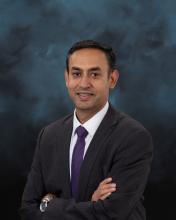
Shuchi “SK” Khurana
Addiguru
Bio:Shuchi “SK” Khurana brings twenty years of experience in predictive analysis and the commercialization of new products and technologies. SK specializes in computational weld modeling, material…

Shuchi “SK” Khurana
Addiguru, Founder & CEO
Bio:
Shuchi “SK” Khurana brings twenty years of experience in predictive analysis and the commercialization of new products and technologies. SK specializes in computational weld modeling, material science, and the prediction of material properties and microstructures based on thermal signals. He has authored over 10 research papers in peer-reviewed journals on microstructure prediction and engineering simulation and holds more than 5 granted patents, including one for cloud-based simulation software for material joining.
SK’s expertise spans the full spectrum of software product management and development. Before founding Addiguru, he worked at Intralox, where he led the development and launch of a predictive software product for industrial applications. His extensive experience includes developing and commercializing novel technologies, with a notable achievement of co-founding and running a startup that raised $4 million in venture funding.
SK earned his Bachelor of Technology in Materials and Metallurgical Engineering from the Indian Institute of Technology (IIT) Kanpur and holds both a Master of Science and a Master of Business Administration from Ohio State University.

Project Abstract:
Addiguru specializes in real-time monitoring technology for additive manufacturing (3D printing), addressing the challenge of detecting and repairing part defects that occur during the build process. Detecting these issues after a part is completed can be costly and complex. Addiguru’s layer-wise monitoring technology identifies anomalies and defects as they arise during the build process, providing immediate notifications to users. Currently, the system uses optical images combined with image processing and artificial intelligence to pinpoint issues within seconds of a layer’s completion.
As an alumni of Innovation Crossroads, Addiguru advanced this real-time monitoring technology through innovative techniques. The company has integrated a patent-licensed combination of Infra-Red (IR) and Near Infra-Red (NIR) cameras to enhance defect detection accuracy. This advancement has significantly benefited the additive manufacturing industry by improving monitoring precision and efficiency.
Bio:
Shuchi “SK” Khurana brings twenty years of experience in predictive analysis and the commercialization of new products and technologies. SK specializes in computational weld modeling, material science, and the prediction of material properties and microstructures based on thermal signals. He has authored over 10 research papers in peer-reviewed journals on microstructure prediction and engineering simulation and holds more than 5 granted patents, including one for cloud-based simulation software for material joining.
SK’s expertise spans the full spectrum of software product management and development. Before founding Addiguru, he worked at Intralox, where he led the development and launch of a predictive software product for industrial applications. His extensive experience includes developing and commercializing novel technologies, with a notable achievement of co-founding and running a startup that raised $4 million in venture funding.
SK earned his Bachelor of Technology in Materials and Metallurgical Engineering from the Indian Institute of Technology (IIT) Kanpur and holds both a Master of Science and a Master of Business Administration from Ohio State University.

Project Abstract:
Addiguru specializes in real-time monitoring technology for additive manufacturing (3D printing), addressing the challenge of detecting and repairing part defects that occur during the build process. Detecting these issues after a part is completed can be costly and complex. Addiguru’s layer-wise monitoring technology identifies anomalies and defects as they arise during the build process, providing immediate notifications to users. Currently, the system uses optical images combined with image processing and artificial intelligence to pinpoint issues within seconds of a layer’s completion.
As an alumni of Innovation Crossroads, Addiguru advanced this real-time monitoring technology through innovative techniques. The company has integrated a patent-licensed combination of Infra-Red (IR) and Near Infra-Red (NIR) cameras to enhance defect detection accuracy. This advancement has significantly benefited the additive manufacturing industry by improving monitoring precision and efficiency.
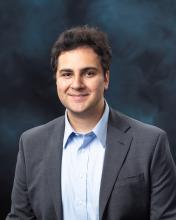
Forrest Shriver
Sentinel Devices LLC
Bio:Forrest Shriver is the Chief Executive Officer of Sentinel Devices LLC and a PhD candidate in Nuclear Engineering at the University of Florida (UF), with an anticipated graduation in May 2021.…

Forrest Shriver
Sentinel Devices, Founder & CEO
Bio:
Forrest Shriver is the Chief Executive Officer of Sentinel Devices LLC and a PhD candidate in Nuclear Engineering at the University of Florida (UF), with an anticipated graduation in May 2021. His dissertation focuses on applying deep learning models to reactor modeling and simulation tasks, particularly in using these models for high-fidelity parameter prediction based on simulated data, while addressing specific data needs and challenges.
Forrest graduated summa cum laude with a Bachelor of Science in Physics from the University of Texas, Rio Grande Valley, and holds a Master’s degree in Nuclear Engineering from UF. Throughout his undergraduate and graduate research career, he has contributed to projects involving design implementation on Field Programmable Gate Arrays (FPGAs), developing CUDA kernels to investigate complex computational behavior, and acquiring expertise in various computer languages and programming models.
Inspired by a passion for enhancing technology security and optimization, Forrest co-founded Sentinel Devices LLC to leverage machine learning for the industrial Internet of Things (IoT). Outside of his professional endeavors, he enjoys reading science fiction and cooking.

Project Abstract:
Industrial control systems are crucial to our daily lives, yet many rely on trust-based digital controllers for communication, leaving them vulnerable to cyberattacks with potentially severe economic and social consequences. Sentinel Devices LLC is advancing industrial cybersecurity by introducing a next-generation solution for autonomous cyberattack detection at the industrial edge. Unlike traditional network-based methods that require constant online communication to be effective, our technology operates independently, detecting cyberattacks and anomalies locally. This localized approach provides precise, real-time threat understanding and enhances the security of industrial control systems in a rapidly evolving digital landscape.
Bio:
Forrest Shriver is the Chief Executive Officer of Sentinel Devices LLC and a PhD candidate in Nuclear Engineering at the University of Florida (UF), with an anticipated graduation in May 2021. His dissertation focuses on applying deep learning models to reactor modeling and simulation tasks, particularly in using these models for high-fidelity parameter prediction based on simulated data, while addressing specific data needs and challenges.
Forrest graduated summa cum laude with a Bachelor of Science in Physics from the University of Texas, Rio Grande Valley, and holds a Master’s degree in Nuclear Engineering from UF. Throughout his undergraduate and graduate research career, he has contributed to projects involving design implementation on Field Programmable Gate Arrays (FPGAs), developing CUDA kernels to investigate complex computational behavior, and acquiring expertise in various computer languages and programming models.
Inspired by a passion for enhancing technology security and optimization, Forrest co-founded Sentinel Devices LLC to leverage machine learning for the industrial Internet of Things (IoT). Outside of his professional endeavors, he enjoys reading science fiction and cooking.

Project Abstract:
Industrial control systems are crucial to our daily lives, yet many rely on trust-based digital controllers for communication, leaving them vulnerable to cyberattacks with potentially severe economic and social consequences. Sentinel Devices LLC is advancing industrial cybersecurity by introducing a next-generation solution for autonomous cyberattack detection at the industrial edge. Unlike traditional network-based methods that require constant online communication to be effective, our technology operates independently, detecting cyberattacks and anomalies locally. This localized approach provides precise, real-time threat understanding and enhances the security of industrial control systems in a rapidly evolving digital landscape.

Philip Stuckey
FC Renew, LLC
Bio:Philip Stuckey brings over sixteen years of expertise in hydrogen fuel cells, encompassing research, development, and intellectual property. He holds a Bachelor of Science in Materials Science…

Philip Stuckey
FC Renew, Founder & CEO
Bio:
Philip Stuckey brings over sixteen years of expertise in hydrogen fuel cells, encompassing research, development, and intellectual property. He holds a Bachelor of Science in Materials Science and Engineering from North Carolina State University, a Master of Science in Mechanical Engineering from the University of Hawaii at Mānoa, and a PhD in Chemical Engineering from Case Western Reserve University, where he conducted much of his doctoral research at Oak Ridge National Laboratory.
Prior to joining Innovation Crossroads, Philip served as a Patent Examiner at the United States Patent and Trademark Office (USPTO), specializing in fuel cell and battery applications, and was recognized as a Patent Agent for his contributions. Before his tenure at the USPTO, he researched electrochemical kinetic processes at proton exchange membrane fuel cell electrodes at Oak Ridge National Laboratory’s Fuels, Engines, and Emissions Research Laboratory. Philip developed a novel in-situ technique to measure catalyst kinetics and oxide layer presence on operating fuel cells and led a project on growing carbon nanotubes for ultrahydrophobic materials used in diffusion media and electrocatalyst support, addressing water management challenges in fuel cell operations.

Project Abstract:
The broad adoption of zero-emission, green hydrogen fuel cell technology in heavy-duty trucks is currently constrained by the limited durability of approximately 5,000 hours, or about 150,000 miles of service. FC Renew is addressing this challenge with our advanced electrode technology, designed to rejuvenate the electrocatalyst within a fuel assembly. This innovation aims to extend durability to over 30,000 hours, equating to more than 1.2 million miles of operation. By significantly enhancing the lifespan of hydrogen fuel cells, our technology will enable heavy-duty trucks and other applications to benefit from green, zero-emission fuel cells without the need for frequent and costly fuel cell stack replacements.
Hydrogen fuel cells represent a crucial component in advancing a hydrogen economy, offering a zero-emission alternative to internal combustion engines. FC Renew is at the forefront of this technology, driving progress toward widespread adoption and a sustainable future.
Bio:
Philip Stuckey brings over sixteen years of expertise in hydrogen fuel cells, encompassing research, development, and intellectual property. He holds a Bachelor of Science in Materials Science and Engineering from North Carolina State University, a Master of Science in Mechanical Engineering from the University of Hawaii at Mānoa, and a PhD in Chemical Engineering from Case Western Reserve University, where he conducted much of his doctoral research at Oak Ridge National Laboratory.
Prior to joining Innovation Crossroads, Philip served as a Patent Examiner at the United States Patent and Trademark Office (USPTO), specializing in fuel cell and battery applications, and was recognized as a Patent Agent for his contributions. Before his tenure at the USPTO, he researched electrochemical kinetic processes at proton exchange membrane fuel cell electrodes at Oak Ridge National Laboratory’s Fuels, Engines, and Emissions Research Laboratory. Philip developed a novel in-situ technique to measure catalyst kinetics and oxide layer presence on operating fuel cells and led a project on growing carbon nanotubes for ultrahydrophobic materials used in diffusion media and electrocatalyst support, addressing water management challenges in fuel cell operations.

Project Abstract:
The broad adoption of zero-emission, green hydrogen fuel cell technology in heavy-duty trucks is currently constrained by the limited durability of approximately 5,000 hours, or about 150,000 miles of service. FC Renew is addressing this challenge with our advanced electrode technology, designed to rejuvenate the electrocatalyst within a fuel assembly. This innovation aims to extend durability to over 30,000 hours, equating to more than 1.2 million miles of operation. By significantly enhancing the lifespan of hydrogen fuel cells, our technology will enable heavy-duty trucks and other applications to benefit from green, zero-emission fuel cells without the need for frequent and costly fuel cell stack replacements.
Hydrogen fuel cells represent a crucial component in advancing a hydrogen economy, offering a zero-emission alternative to internal combustion engines. FC Renew is at the forefront of this technology, driving progress toward widespread adoption and a sustainable future.
Cohort 6 (2022-2024)
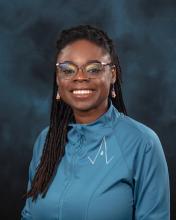
Bianca Bailey
Agriwater Corporation
Bio:Bianca Bailey is the founder of Agriwater, a company dedicated to developing a mobile wastewater treatment system that transforms livestock manure into clean water and organic fertilizer. This…

Bianca Bailey
Agriwater, Founder & CEO
Bio:
Bianca Bailey is the founder of Agriwater, a company dedicated to developing a mobile wastewater treatment system that transforms livestock manure into clean water and organic fertilizer. This cutting-edge technology not only purifies animal waste but also reduces greenhouse gas emissions and creates additional revenue streams for farmers. Agriwater provides an essential environmental compliance solution, helping farmers avoid costly fines for manure pit or lagoon spills into rivers.
Bianca holds a Ph.D. in Agricultural and Biological Engineering and an M.S. in Environmental Engineering from the University of Illinois Urbana-Champaign, as well as a B.S. in Chemical Engineering from Howard University. She is also an alumna of the GEM Fellowship program.
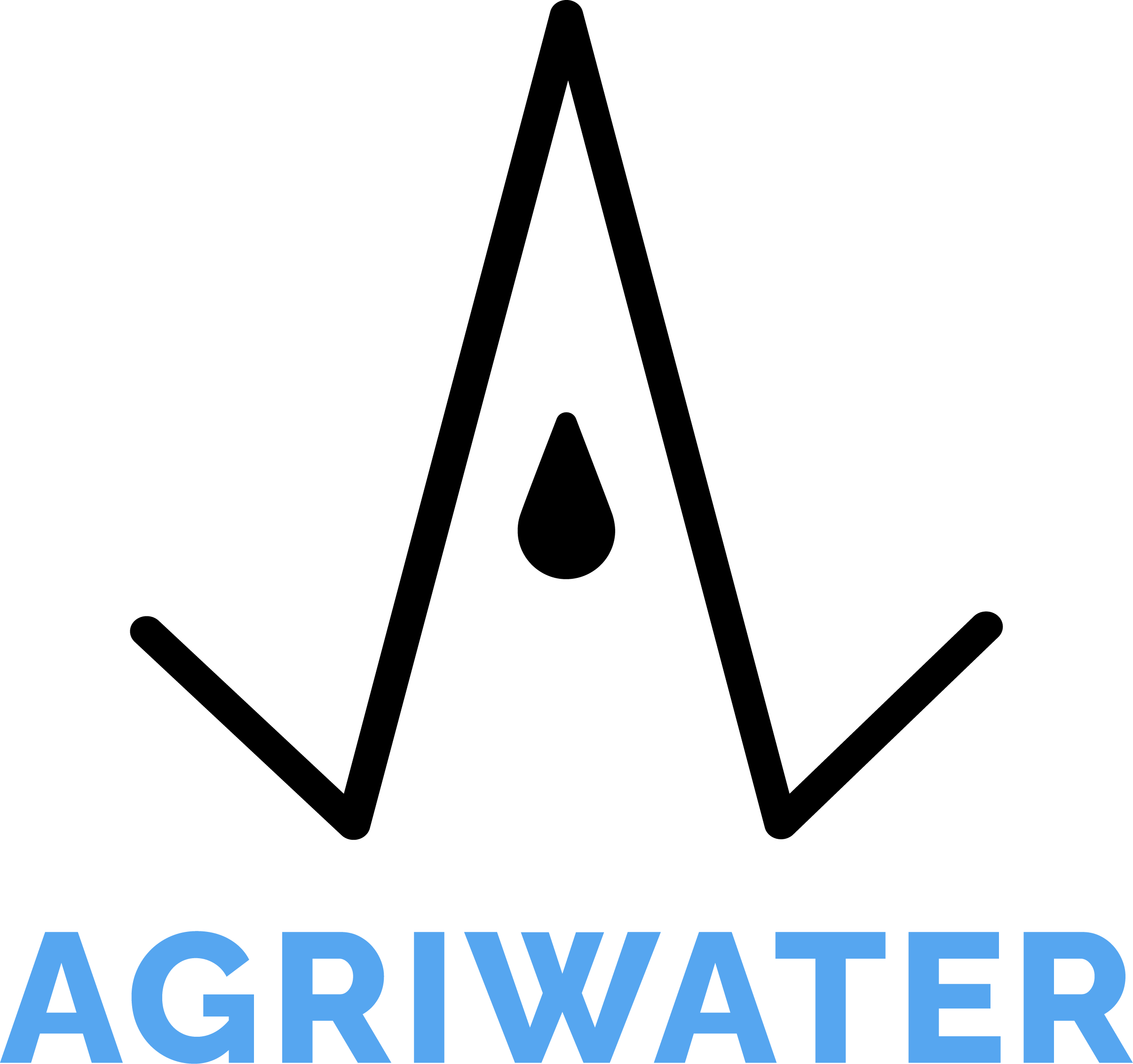
Project Abstract:
Agriwater is revolutionizing sustainable water management with its innovative mobile water treatment systems, designed to transform livestock manure water into valuable by-products: clean water, organic fertilizer, and carbon credits. Through extensive research and customer feedback, Agriwater identified a critical challenge faced by livestock farmers: the environmental compliance issues related to the leaching of toxic animal manure from lagoons and storage pits. These issues can lead to costly environmental violation fines, plant shutdowns, and even imprisonment due to non-compliance with the National Pollutant Discharge Elimination System (NPDES) regulations.
Agriwater’s advanced technology not only addresses these compliance concerns but also provides farmers with commercially viable solutions that contribute to environmental sustainability and economic efficiency.
Bio:
Bianca Bailey is the founder of Agriwater, a company dedicated to developing a mobile wastewater treatment system that transforms livestock manure into clean water and organic fertilizer. This cutting-edge technology not only purifies animal waste but also reduces greenhouse gas emissions and creates additional revenue streams for farmers. Agriwater provides an essential environmental compliance solution, helping farmers avoid costly fines for manure pit or lagoon spills into rivers.
Bianca holds a Ph.D. in Agricultural and Biological Engineering and an M.S. in Environmental Engineering from the University of Illinois Urbana-Champaign, as well as a B.S. in Chemical Engineering from Howard University. She is also an alumna of the GEM Fellowship program.

Project Abstract:
Agriwater is revolutionizing sustainable water management with its innovative mobile water treatment systems, designed to transform livestock manure water into valuable by-products: clean water, organic fertilizer, and carbon credits. Through extensive research and customer feedback, Agriwater identified a critical challenge faced by livestock farmers: the environmental compliance issues related to the leaching of toxic animal manure from lagoons and storage pits. These issues can lead to costly environmental violation fines, plant shutdowns, and even imprisonment due to non-compliance with the National Pollutant Discharge Elimination System (NPDES) regulations.
Agriwater’s advanced technology not only addresses these compliance concerns but also provides farmers with commercially viable solutions that contribute to environmental sustainability and economic efficiency.

Rajan Kumar
Ateios Systems
Bio:Rajan Kumar, PhD, is a National Science Foundation Graduate Research Fellow and a Forbes Next 1000 Fellow with over 11 years of expertise in nanoscale research and the commercialization of deep…

Rajan Kumar
Ateios Systems, CEO
Bio:
Rajan Kumar, PhD, is a National Science Foundation Graduate Research Fellow and a Forbes Next 1000 Fellow with over 11 years of expertise in nanoscale research and the commercialization of deep technology. He stands out as one of the few doctoral engineers with a specialized focus in nanoengineering, having studied at two of the world's leading institutions: the State University of New York (SUNY) at Albany (now SUNY Polytechnic) and the University of California, San Diego (UCSD).
At UCSD, Rajan earned both his doctoral and master’s degrees in Nanoscale Engineering, concentrating on printed electronics and novel composites for electrochemical devices. His doctoral research led to the development and patenting of the world’s first printable stretchable battery, recognized as one of 13 battery innovations poised to change the world.
Drawing on his background in advanced materials and manufacturing, as well as expertise in analytical software, Rajan and his team at Ateios Systems are revolutionizing the design, engineering, and manufacturing of batteries.
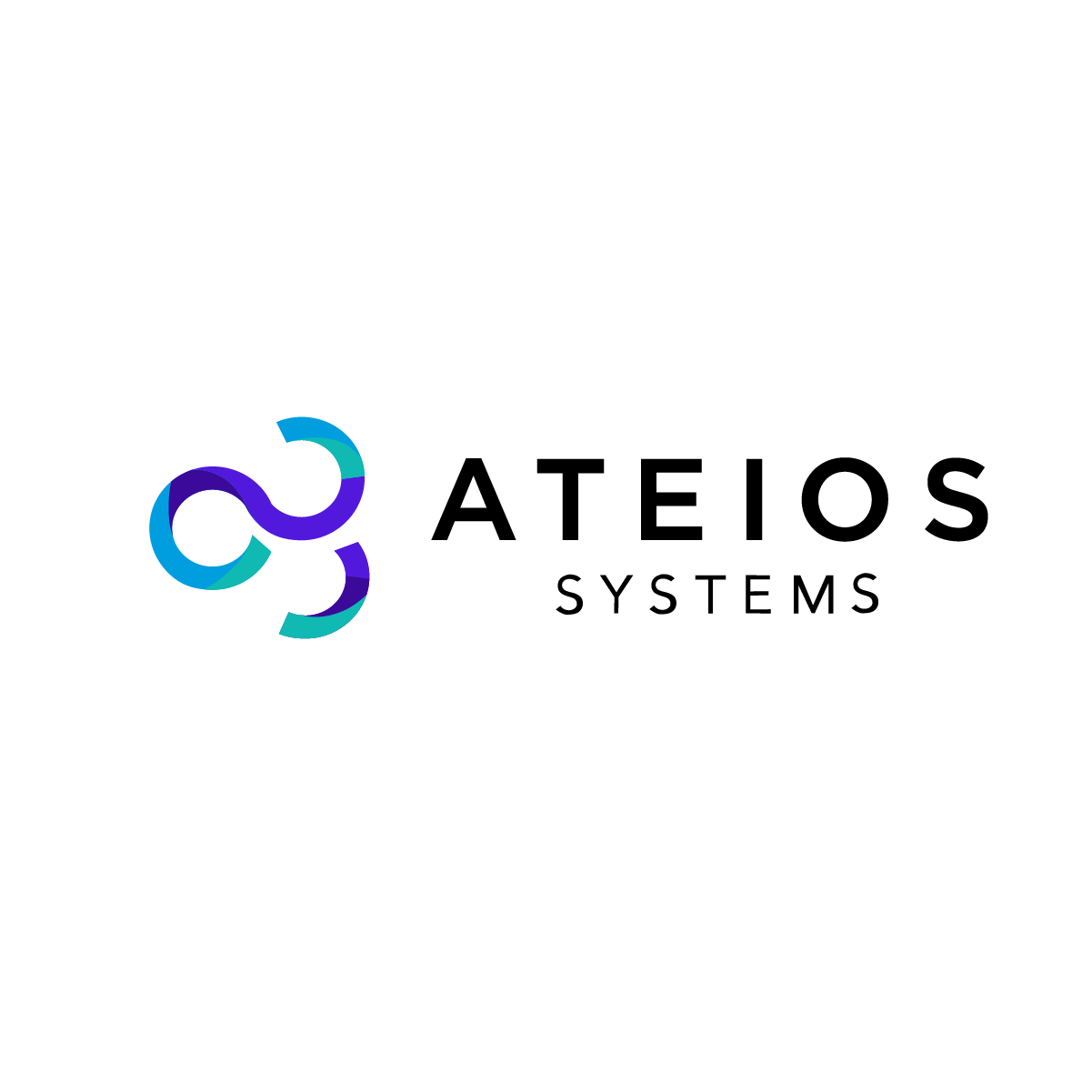
Project Abstract:
Ateios Systems is at the forefront of developing breakthrough coating and processing technologies essential for scaling solid-state batteries (SSBs) through rapid heterogeneous deposition methods. Our key innovation is the use of radiation-curable composite electrodes, which significantly enhance battery energy density by over 350 Wh/kg while reducing costs to under $100/kWh. These composites enable a tenfold increase in manufacturing speed (up to 940 m²/min), lower processing costs by more than 20%, and eliminate the need for toxic organic solvents, offering a positive environmental impact.
The radiation-curable composites are applied using roll-to-roll coating systems such as comma bar or slot-die, and are combined with solid-state electrolytes to develop a heterogeneous deposition processing system that precisely controls microstructure, interfaces, and form factors.
This project represents a critical step towards creating widespread, safe, and high-energy dense SSBs. It also aims to revitalize American battery manufacturing, addressing the current challenge where only 1% of lithium-ion batteries are produced in the U.S., posing security, environmental, and economic risks. By utilizing radiation-curable composite electrodes and water-in-salt electrolytes, Ateios Systems will overcome these challenges and establish a U.S.-based manufacturing capability capable of producing 20 TWh of clean storage by 2030 in just 2 years, compared to 30 years using traditional methods.
Bio:
Rajan Kumar, PhD, is a National Science Foundation Graduate Research Fellow and a Forbes Next 1000 Fellow with over 11 years of expertise in nanoscale research and the commercialization of deep technology. He stands out as one of the few doctoral engineers with a specialized focus in nanoengineering, having studied at two of the world's leading institutions: the State University of New York (SUNY) at Albany (now SUNY Polytechnic) and the University of California, San Diego (UCSD).
At UCSD, Rajan earned both his doctoral and master’s degrees in Nanoscale Engineering, concentrating on printed electronics and novel composites for electrochemical devices. His doctoral research led to the development and patenting of the world’s first printable stretchable battery, recognized as one of 13 battery innovations poised to change the world.
Drawing on his background in advanced materials and manufacturing, as well as expertise in analytical software, Rajan and his team at Ateios Systems are revolutionizing the design, engineering, and manufacturing of batteries.

Project Abstract:
Ateios Systems is at the forefront of developing breakthrough coating and processing technologies essential for scaling solid-state batteries (SSBs) through rapid heterogeneous deposition methods. Our key innovation is the use of radiation-curable composite electrodes, which significantly enhance battery energy density by over 350 Wh/kg while reducing costs to under $100/kWh. These composites enable a tenfold increase in manufacturing speed (up to 940 m²/min), lower processing costs by more than 20%, and eliminate the need for toxic organic solvents, offering a positive environmental impact.
The radiation-curable composites are applied using roll-to-roll coating systems such as comma bar or slot-die, and are combined with solid-state electrolytes to develop a heterogeneous deposition processing system that precisely controls microstructure, interfaces, and form factors.
This project represents a critical step towards creating widespread, safe, and high-energy dense SSBs. It also aims to revitalize American battery manufacturing, addressing the current challenge where only 1% of lithium-ion batteries are produced in the U.S., posing security, environmental, and economic risks. By utilizing radiation-curable composite electrodes and water-in-salt electrolytes, Ateios Systems will overcome these challenges and establish a U.S.-based manufacturing capability capable of producing 20 TWh of clean storage by 2030 in just 2 years, compared to 30 years using traditional methods.
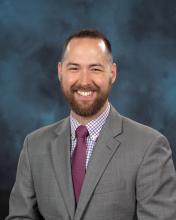
Alex Stiles
Vitriform3D Incorporated
Bio:Alex Stiles holds a Bachelor's degree in Mechanical Engineering from the Illinois Institute of Technology and a Ph.D. in Energy Science and Engineering from the University of Tennessee, Knoxville…

Alex Stiles
Vitriform3D, Co-founder & CEO
Bio:
Alex Stiles holds a Bachelor's degree in Mechanical Engineering from the Illinois Institute of Technology and a Ph.D. in Energy Science and Engineering from the University of Tennessee, Knoxville. During his undergraduate studies, Alex founded Samambu LLC, a bamboo fiber composites company that garnered awards at three business plan competitions.
Following his undergraduate studies, Alex worked as a product engineer in the railroad industry for nearly four years before pursuing graduate research in advanced composites and additive manufacturing (AM). Under the guidance of Dr. Uday Vaidya, his dissertation focused on photopolymer formulation and cure kinetics for large-scale AM. With over a decade of experience in polymeric composites and tooling, Alex brings extensive expertise to his work in the field.
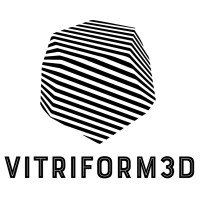
Project Abstract:
Vitriform3D is transforming the 3D printing landscape by utilizing recycled glass as a feedstock in powder bed 3D printing technology. Despite being infinitely recyclable, over 8 million tons of glass in the U.S. end up in landfills each year due to its low raw material value. Vitriform3D's patent-pending Binder Jet Technology (BJT) addresses this issue by enabling the use of recycled glass in large-scale 3D printing applications.
Our innovative technology capitalizes on glass’s inherent wear resistance and optical properties to produce durable glass composite products with high resolution and virtually unlimited design possibilities. Our initial focus is on tooling for the marine industry, where large-scale BJT can significantly reduce production time and manual labor requirements. By being based in the Oak Ridge/Knoxville area, Vitriform3D is strategically positioned to engage with the marine tooling industry and obtain valuable feedback for further development of our technology.
Bio:
Alex Stiles holds a Bachelor's degree in Mechanical Engineering from the Illinois Institute of Technology and a Ph.D. in Energy Science and Engineering from the University of Tennessee, Knoxville. During his undergraduate studies, Alex founded Samambu LLC, a bamboo fiber composites company that garnered awards at three business plan competitions.
Following his undergraduate studies, Alex worked as a product engineer in the railroad industry for nearly four years before pursuing graduate research in advanced composites and additive manufacturing (AM). Under the guidance of Dr. Uday Vaidya, his dissertation focused on photopolymer formulation and cure kinetics for large-scale AM. With over a decade of experience in polymeric composites and tooling, Alex brings extensive expertise to his work in the field.

Project Abstract:
Vitriform3D is transforming the 3D printing landscape by utilizing recycled glass as a feedstock in powder bed 3D printing technology. Despite being infinitely recyclable, over 8 million tons of glass in the U.S. end up in landfills each year due to its low raw material value. Vitriform3D's patent-pending Binder Jet Technology (BJT) addresses this issue by enabling the use of recycled glass in large-scale 3D printing applications.
Our innovative technology capitalizes on glass’s inherent wear resistance and optical properties to produce durable glass composite products with high resolution and virtually unlimited design possibilities. Our initial focus is on tooling for the marine industry, where large-scale BJT can significantly reduce production time and manual labor requirements. By being based in the Oak Ridge/Knoxville area, Vitriform3D is strategically positioned to engage with the marine tooling industry and obtain valuable feedback for further development of our technology.
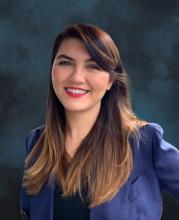
Anca Timofte
Holocene Climate Corporation
Bio:Anca Timofte earned her B.S. in Chemical Engineering from Washington University in St. Louis, where she also served as a research fellow in the Environmental NanoChemistry Laboratory. She pursued…

Anca Timofte
Holocene Climate Corporation, Co-founder & CEO
Bio:
Anca Timofte earned her B.S. in Chemical Engineering from Washington University in St. Louis, where she also served as a research fellow in the Environmental NanoChemistry Laboratory. She pursued her interest in environmental applications by obtaining an M.S. in Environmental Engineering from ETH Zurich.
Anca spent seven years at Climeworks, developing and implementing chemical processes for direct-air-capture plants. As a process engineering team lead, she managed the design and engineering of over 14 carbon removal plants and built a skilled team.
In June 2022, Anca completed her MBA at the Stanford Graduate School of Business, focusing on the intersection of climate and finance. As the Founder and CEO of Holocene, she is dedicated to pioneering innovative carbon removal solutions.

Project Abstract:
Holocene specializes in designing and building chemical plants that efficiently extract carbon dioxide (CO2) from the atmosphere using a groundbreaking organic chemistry developed and tested at ORNL. The process involves two organic compounds working in tandem: one compound enhances water’s capacity to absorb CO2, while the other facilitates the removal of CO2 from the water by forming a solid precipitate. When this solid is heated, the CO2 is released in a concentrated form, ready for permanent underground storage.
This process generates negative emissions—an environmental benefit akin to carbon credits. Companies and institutions with net-zero carbon commitments are already purchasing negative emissions to meet their sustainability goals. Additionally, both the European Union and the U.S. governments are fostering the development of negative emissions technologies through financial incentives, such as the Low Carbon Fuel Standard and the 45Q tax credit. Holocene aims to provide negative emissions solutions to corporations and governments, supporting their efforts to achieve decarbonization targets.
Bio:
Anca Timofte earned her B.S. in Chemical Engineering from Washington University in St. Louis, where she also served as a research fellow in the Environmental NanoChemistry Laboratory. She pursued her interest in environmental applications by obtaining an M.S. in Environmental Engineering from ETH Zurich.
Anca spent seven years at Climeworks, developing and implementing chemical processes for direct-air-capture plants. As a process engineering team lead, she managed the design and engineering of over 14 carbon removal plants and built a skilled team.
In June 2022, Anca completed her MBA at the Stanford Graduate School of Business, focusing on the intersection of climate and finance. As the Founder and CEO of Holocene, she is dedicated to pioneering innovative carbon removal solutions.

Project Abstract:
Holocene specializes in designing and building chemical plants that efficiently extract carbon dioxide (CO2) from the atmosphere using a groundbreaking organic chemistry developed and tested at ORNL. The process involves two organic compounds working in tandem: one compound enhances water’s capacity to absorb CO2, while the other facilitates the removal of CO2 from the water by forming a solid precipitate. When this solid is heated, the CO2 is released in a concentrated form, ready for permanent underground storage.
This process generates negative emissions—an environmental benefit akin to carbon credits. Companies and institutions with net-zero carbon commitments are already purchasing negative emissions to meet their sustainability goals. Additionally, both the European Union and the U.S. governments are fostering the development of negative emissions technologies through financial incentives, such as the Low Carbon Fuel Standard and the 45Q tax credit. Holocene aims to provide negative emissions solutions to corporations and governments, supporting their efforts to achieve decarbonization targets.
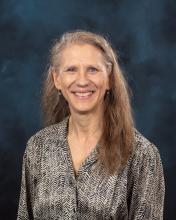
Kim Tutin
Captis Aire LLC
Bio:Kim Tutin is the visionary Founder and CEO of Captis Aire, a company dedicated to commercializing the Fluidized Bed Concentrator (FBC), an advanced air pollution control technology tailored for…

Kim Tutin
Captis Aire, Founder & CEO
Bio:
Kim Tutin is the visionary Founder and CEO of Captis Aire, a company dedicated to commercializing the Fluidized Bed Concentrator (FBC), an advanced air pollution control technology tailored for the wood products industry. Under Kim's passionate and strong leadership, her team has achieved significant milestones, including:
- Successfully completing two pilot runs of the FBC at a commercial wood products manufacturing site.
- Securing a $5 million letter of intent from an FBC customer.
- Acquiring a technology license for the FBC.
As the inventor of the FBC, Kim played a crucial role in filing and defending two patent applications for the technology. Before founding Captis Aire, she held various positions at Georgia-Pacific Chemicals, including chemist, group leader, and technology scout, where she was instrumental in developing new technologies.
Kim holds a bachelor’s degree in Chemistry from the University of Minnesota and an MBA in Technology and Engineering Management from the City University of Seattle.

Project Abstract:
As global efforts intensify to reduce air pollutants, Captis Aire is at the forefront with a cutting-edge technology designed to capture air pollutants from wood products manufacturing sites. These sites include producers of liquid biofuels, wood pellets, oriented strand board, plywood, and lumber. A key pollutant released during the wood drying process is turpentine, which is valuable and can be repurposed for various uses, including as biofuels.
Our innovative Fluidized Bed Concentrator (FBC) technology, combined with Bead Activated Carbon (BAC), effectively captures and recovers this valuable turpentine. Preliminary studies show that the recovered turpentine can be converted into Sustainable Aviation Fuel blends, offering excellent fuel operability and performance characteristics.
Once commercialized, the FBC technology will offer several significant benefits:
- Clean the air: Reduce air pollution at manufacturing sites.
- Reduce fossil fuel energy usage: Enhance energy efficiency in the industry.
- Recover turpentine: Capture and repurpose valuable turpentine.
- Convert turpentine to valuable products: Transform turpentine into biofuels and other useful products.
- Support communities: Provide economic and environmental benefits to rural and underserved communities and opportunity zones.
- Address the climate crisis: Contribute to global efforts in combating climate change.
The resources provided by the Innovation Crossroads program will be instrumental in advancing the development of the FBC technology and turpentine products. With this support, we have the potential to revolutionize an industry currently dominated by outdated, inefficient air pollution control systems. Similar to the transition from old combustion engine cars to modern, efficient hybrids, our FBC systems will replace the antiquated technology with advanced, energy-efficient air pollution control solutions.
Bio:
Kim Tutin is the visionary Founder and CEO of Captis Aire, a company dedicated to commercializing the Fluidized Bed Concentrator (FBC), an advanced air pollution control technology tailored for the wood products industry. Under Kim's passionate and strong leadership, her team has achieved significant milestones, including:
- Successfully completing two pilot runs of the FBC at a commercial wood products manufacturing site.
- Securing a $5 million letter of intent from an FBC customer.
- Acquiring a technology license for the FBC.
As the inventor of the FBC, Kim played a crucial role in filing and defending two patent applications for the technology. Before founding Captis Aire, she held various positions at Georgia-Pacific Chemicals, including chemist, group leader, and technology scout, where she was instrumental in developing new technologies.
Kim holds a bachelor’s degree in Chemistry from the University of Minnesota and an MBA in Technology and Engineering Management from the City University of Seattle.

Project Abstract:
As global efforts intensify to reduce air pollutants, Captis Aire is at the forefront with a cutting-edge technology designed to capture air pollutants from wood products manufacturing sites. These sites include producers of liquid biofuels, wood pellets, oriented strand board, plywood, and lumber. A key pollutant released during the wood drying process is turpentine, which is valuable and can be repurposed for various uses, including as biofuels.
Our innovative Fluidized Bed Concentrator (FBC) technology, combined with Bead Activated Carbon (BAC), effectively captures and recovers this valuable turpentine. Preliminary studies show that the recovered turpentine can be converted into Sustainable Aviation Fuel blends, offering excellent fuel operability and performance characteristics.
Once commercialized, the FBC technology will offer several significant benefits:
- Clean the air: Reduce air pollution at manufacturing sites.
- Reduce fossil fuel energy usage: Enhance energy efficiency in the industry.
- Recover turpentine: Capture and repurpose valuable turpentine.
- Convert turpentine to valuable products: Transform turpentine into biofuels and other useful products.
- Support communities: Provide economic and environmental benefits to rural and underserved communities and opportunity zones.
- Address the climate crisis: Contribute to global efforts in combating climate change.
The resources provided by the Innovation Crossroads program will be instrumental in advancing the development of the FBC technology and turpentine products. With this support, we have the potential to revolutionize an industry currently dominated by outdated, inefficient air pollution control systems. Similar to the transition from old combustion engine cars to modern, efficient hybrids, our FBC systems will replace the antiquated technology with advanced, energy-efficient air pollution control solutions.

